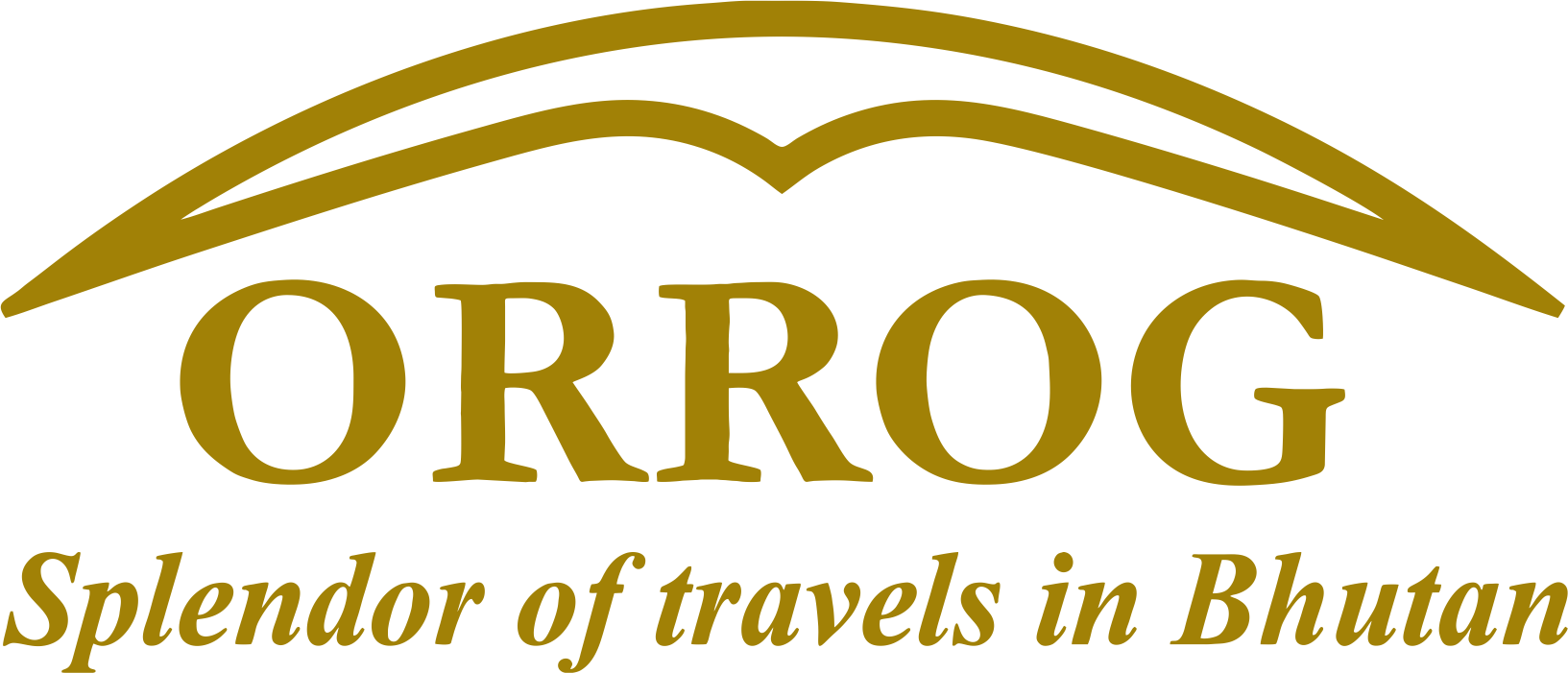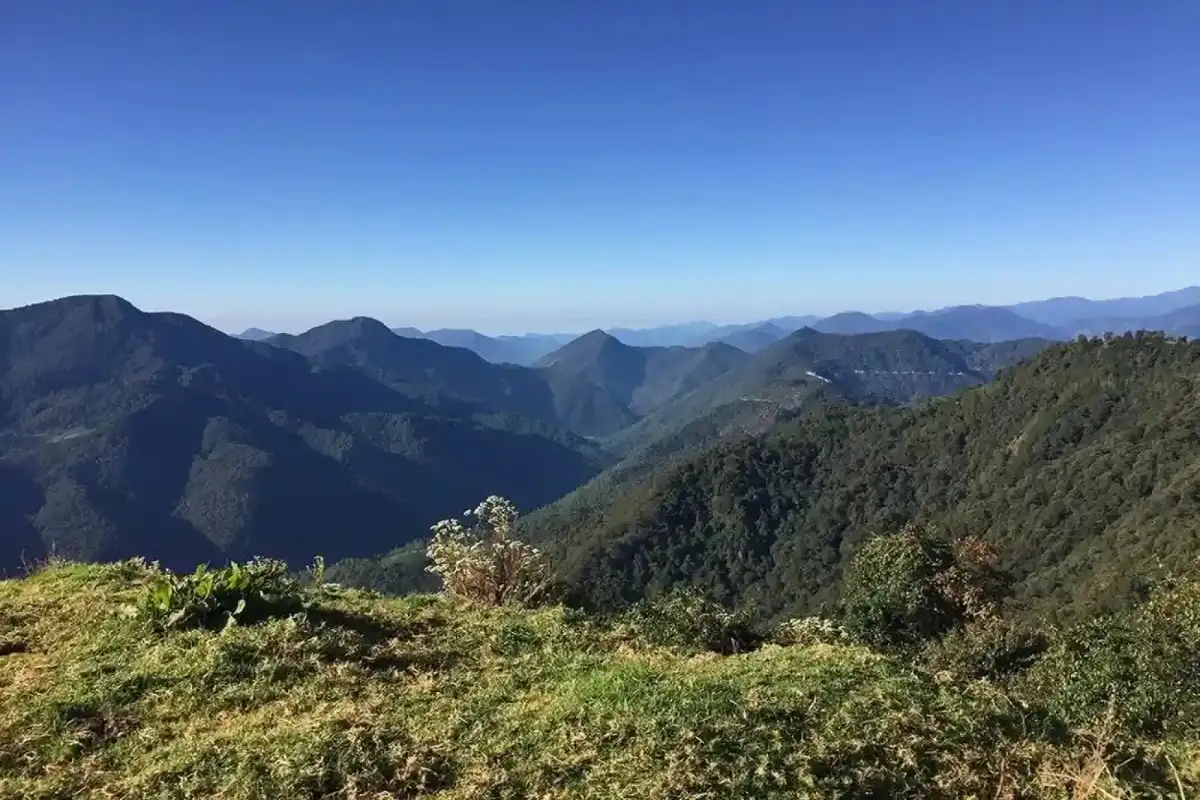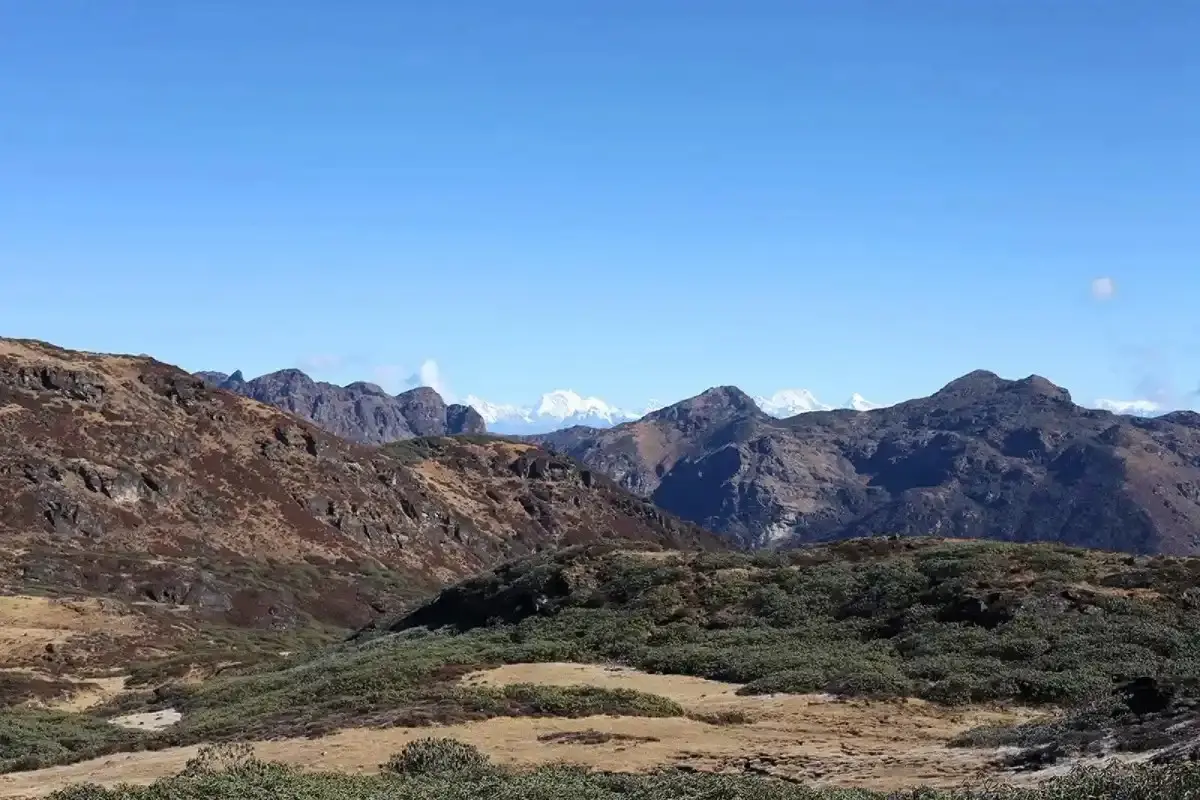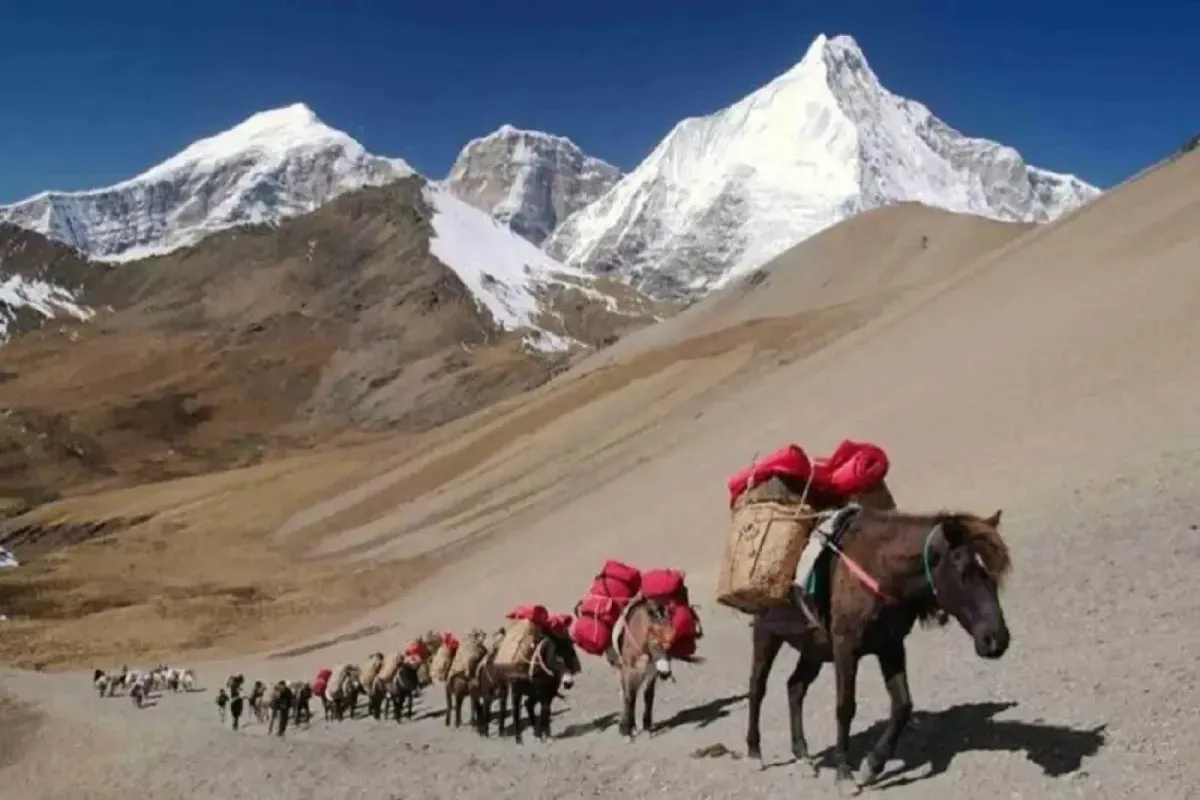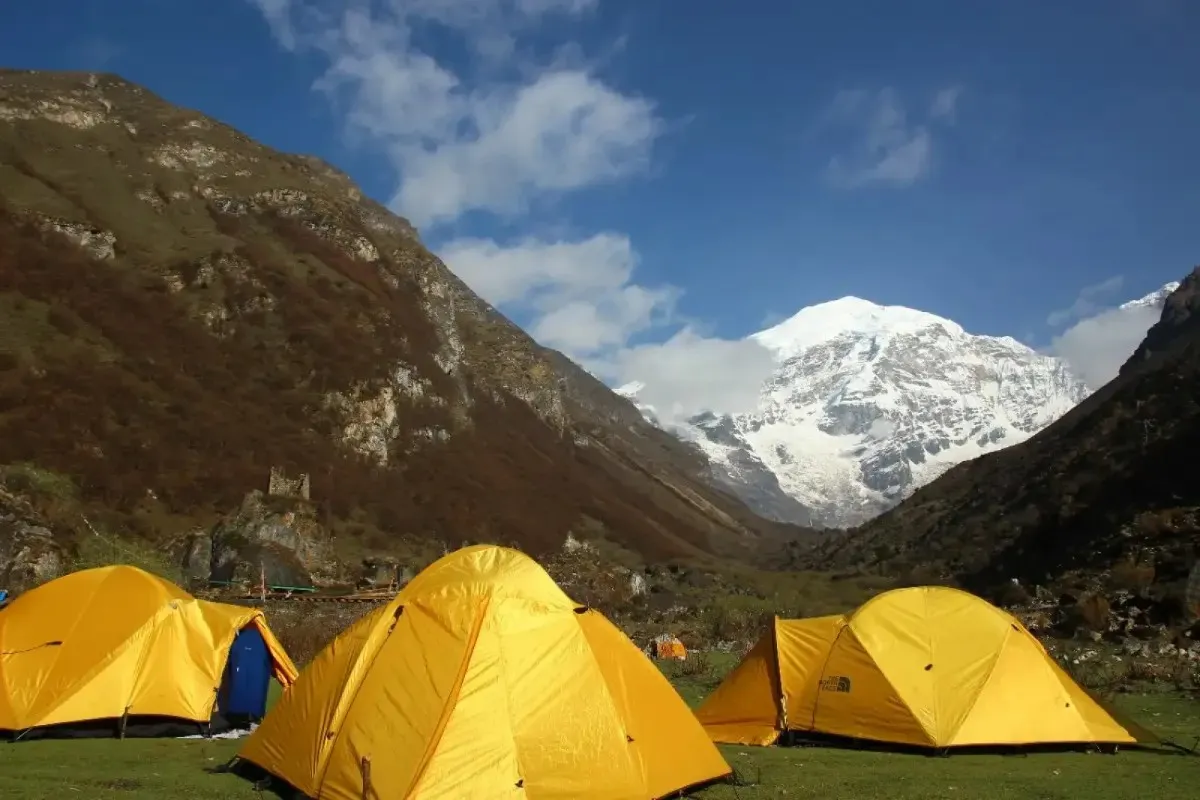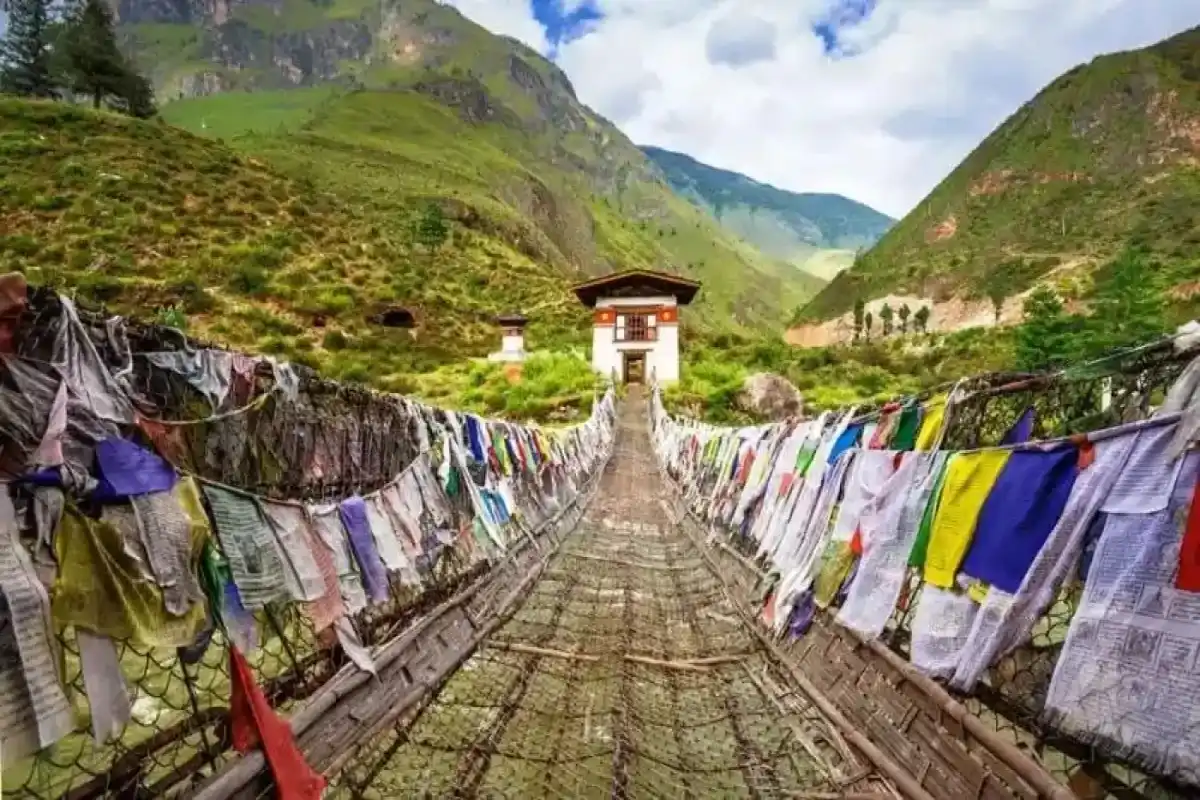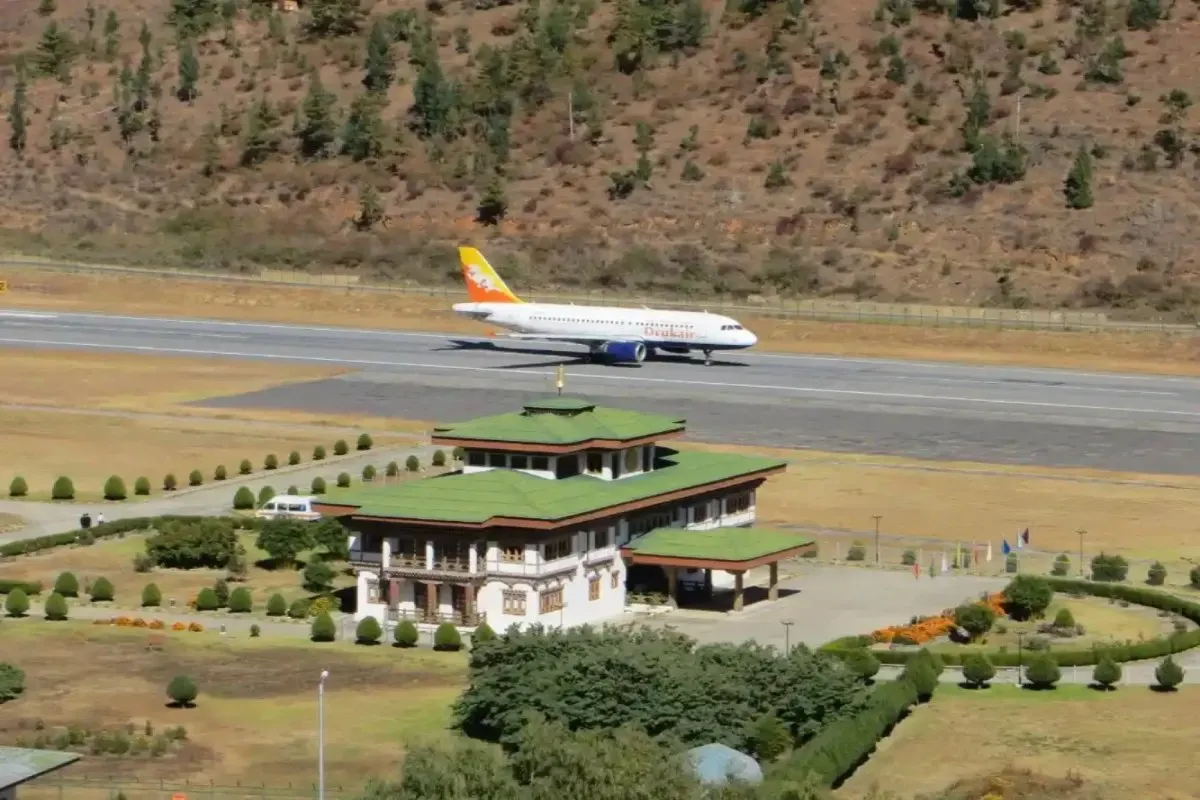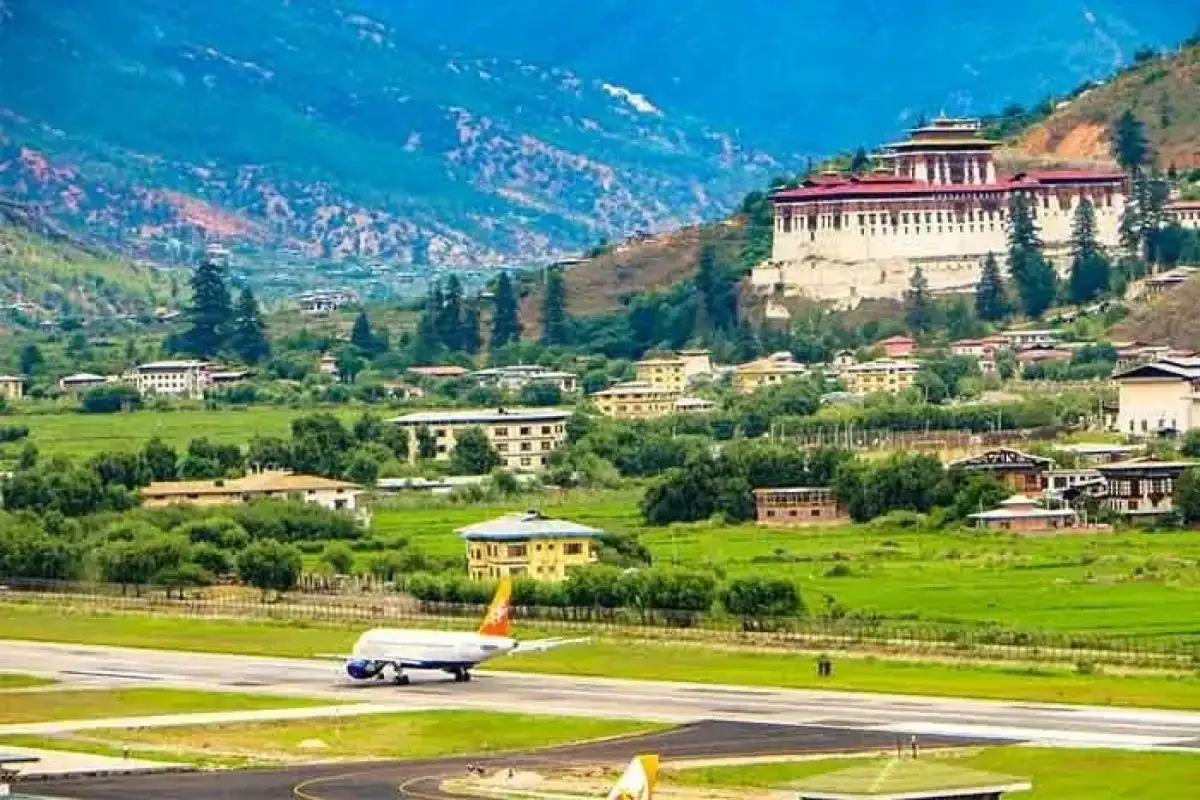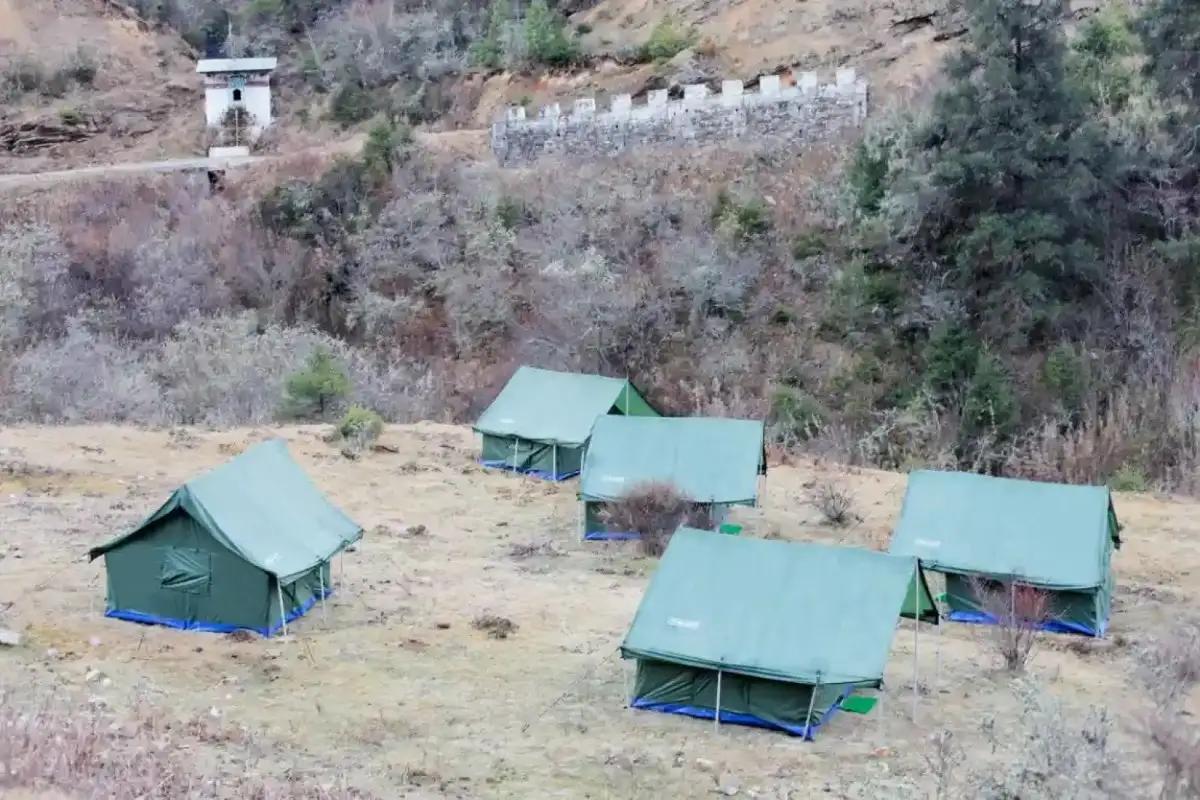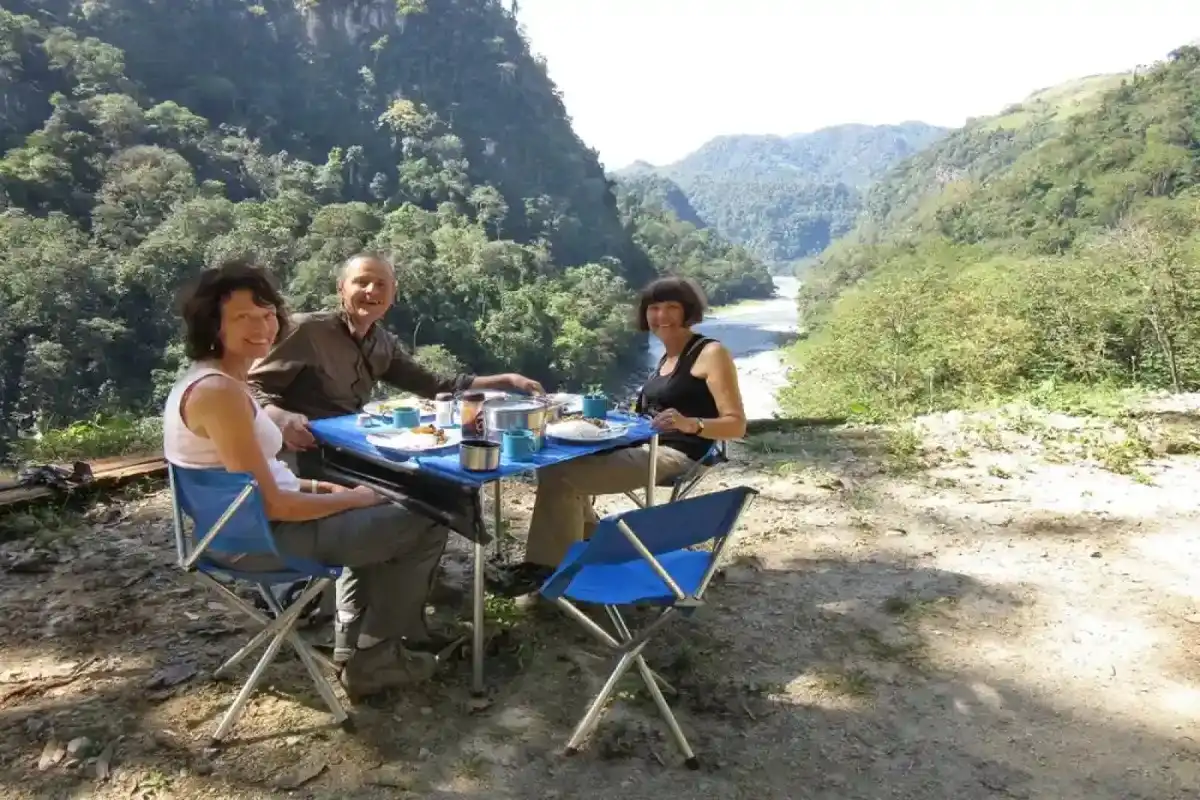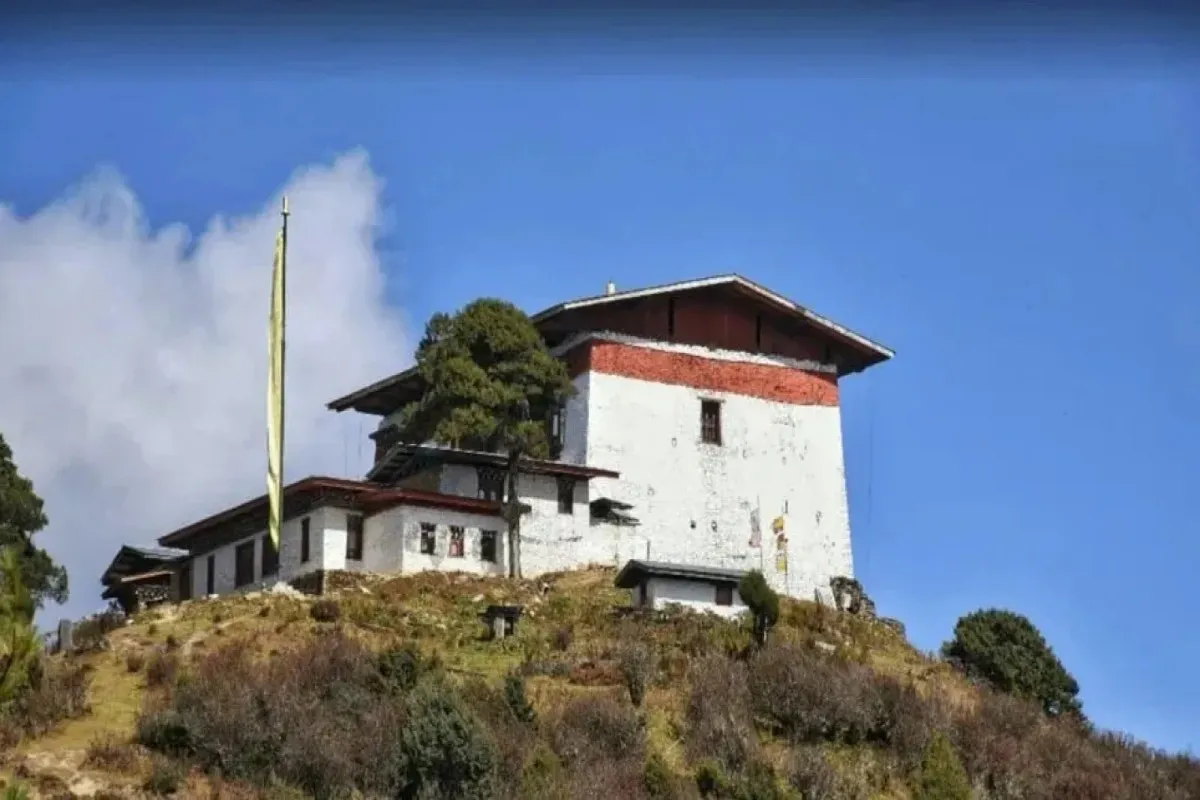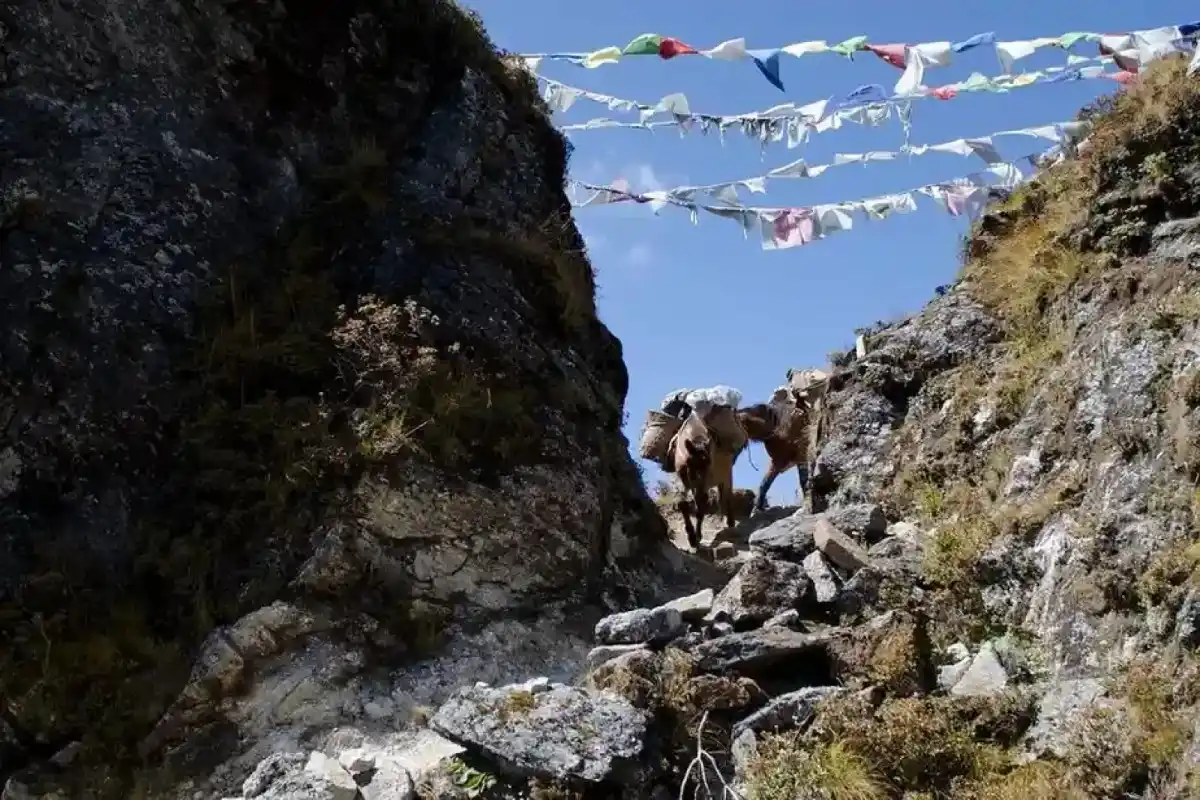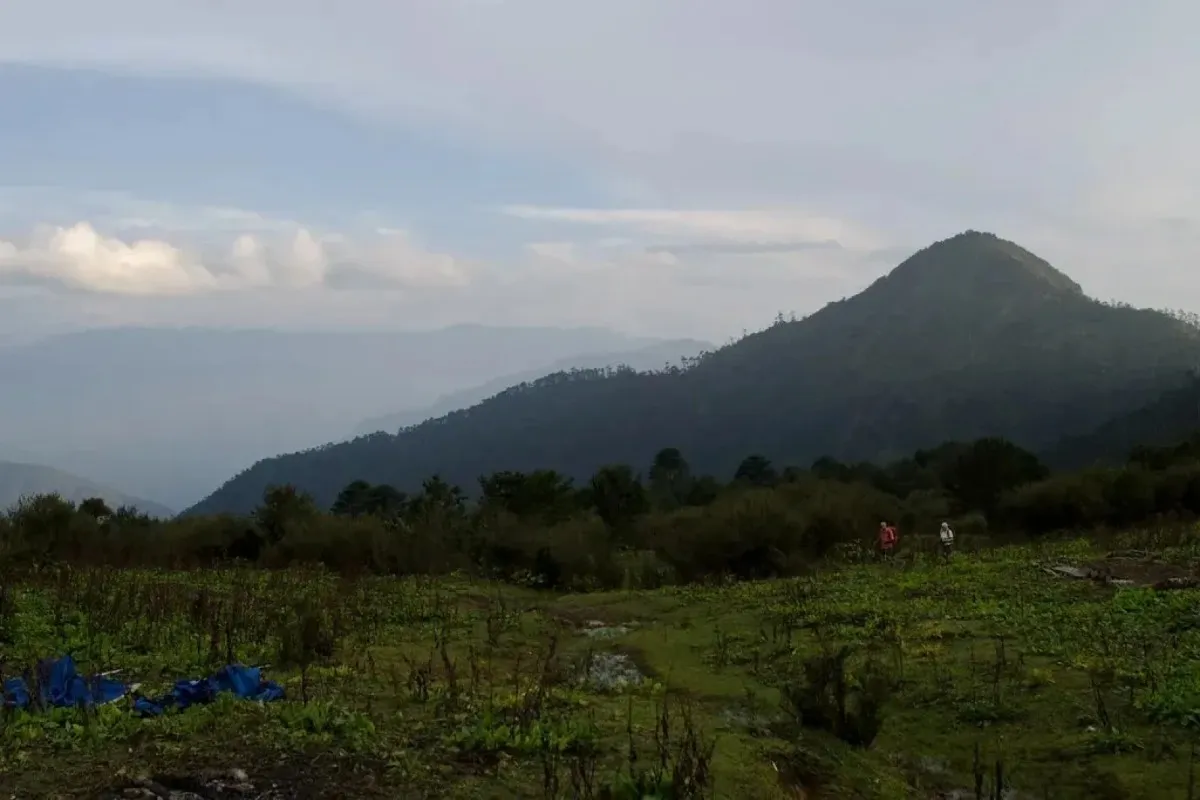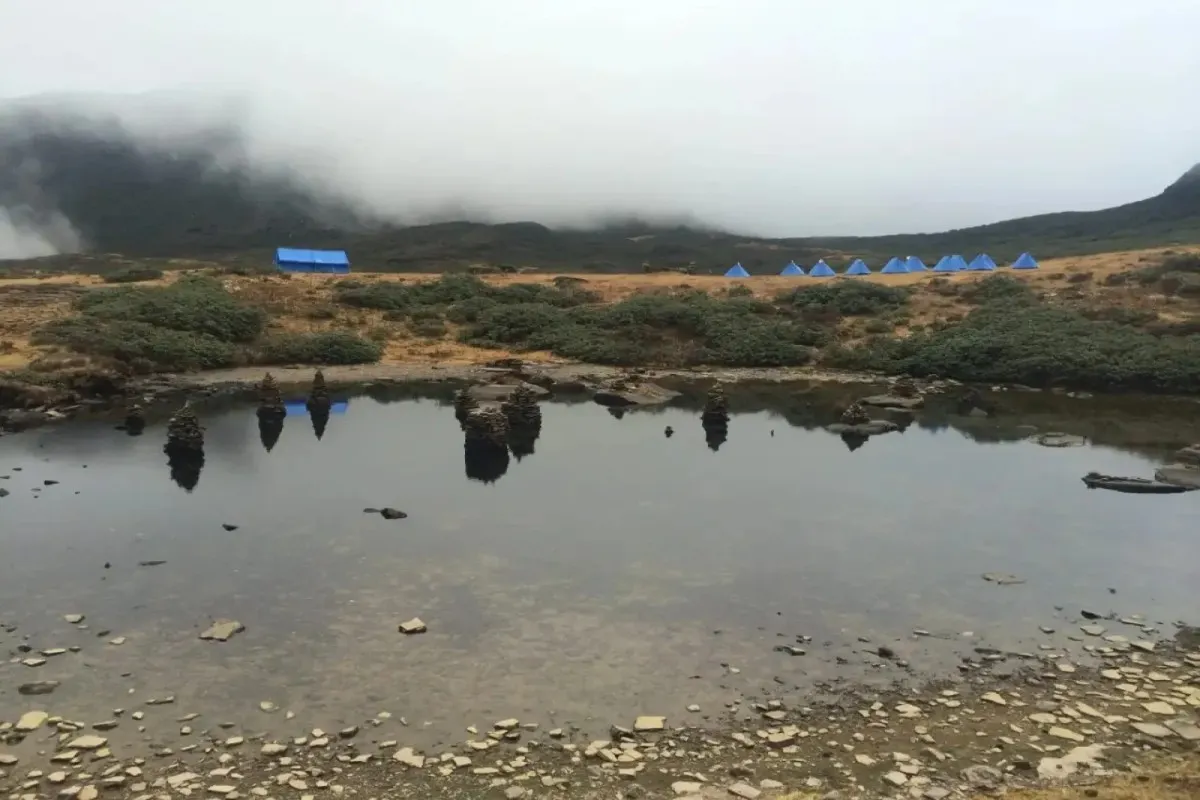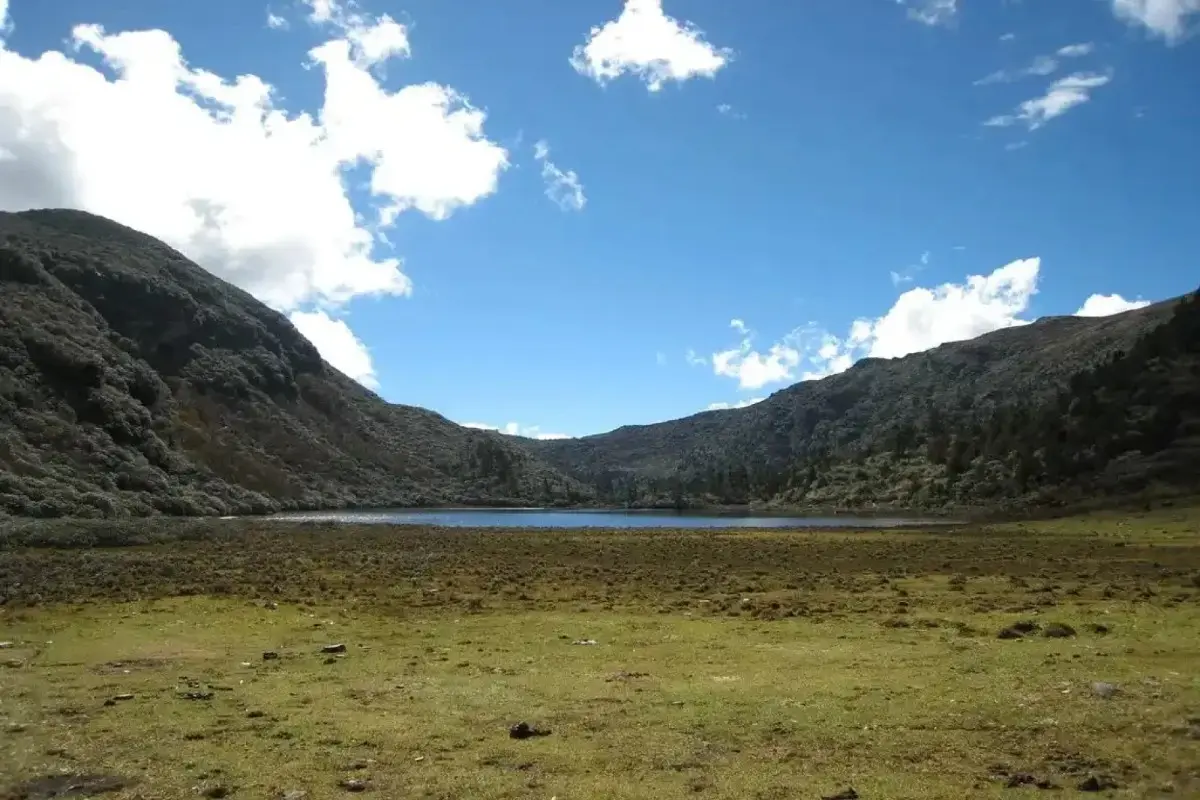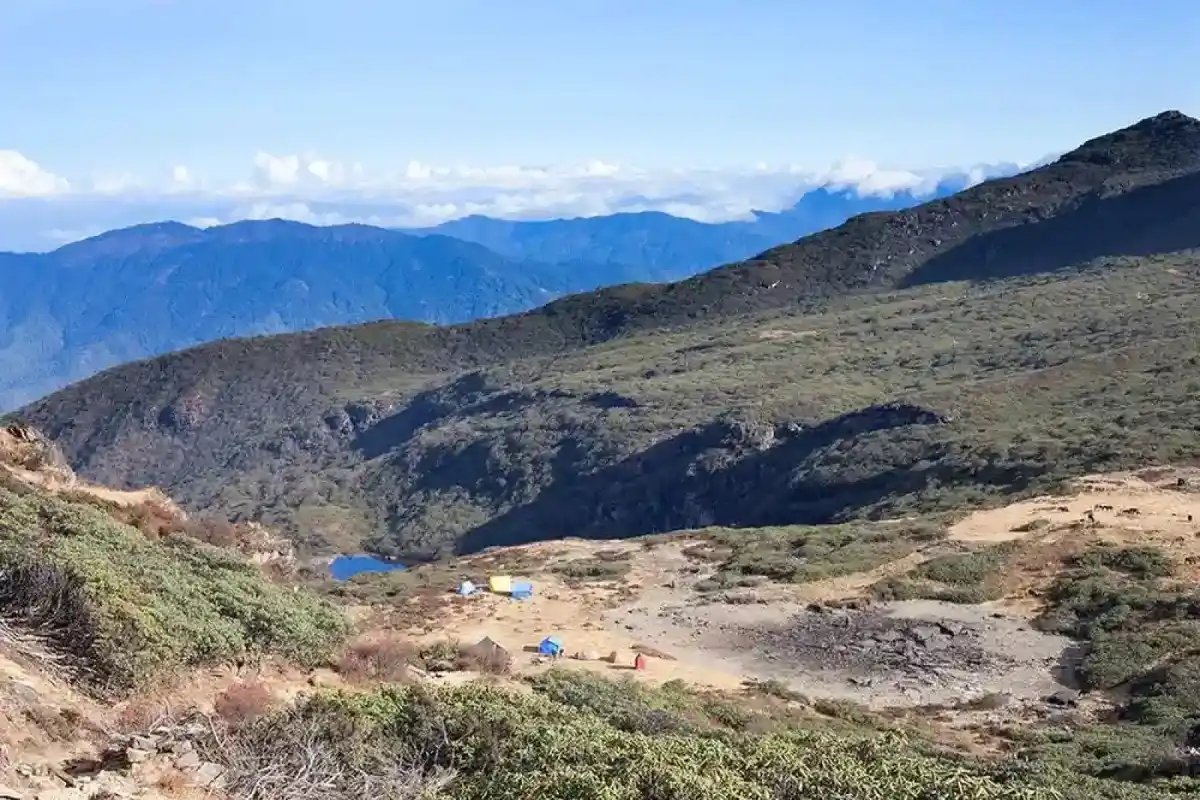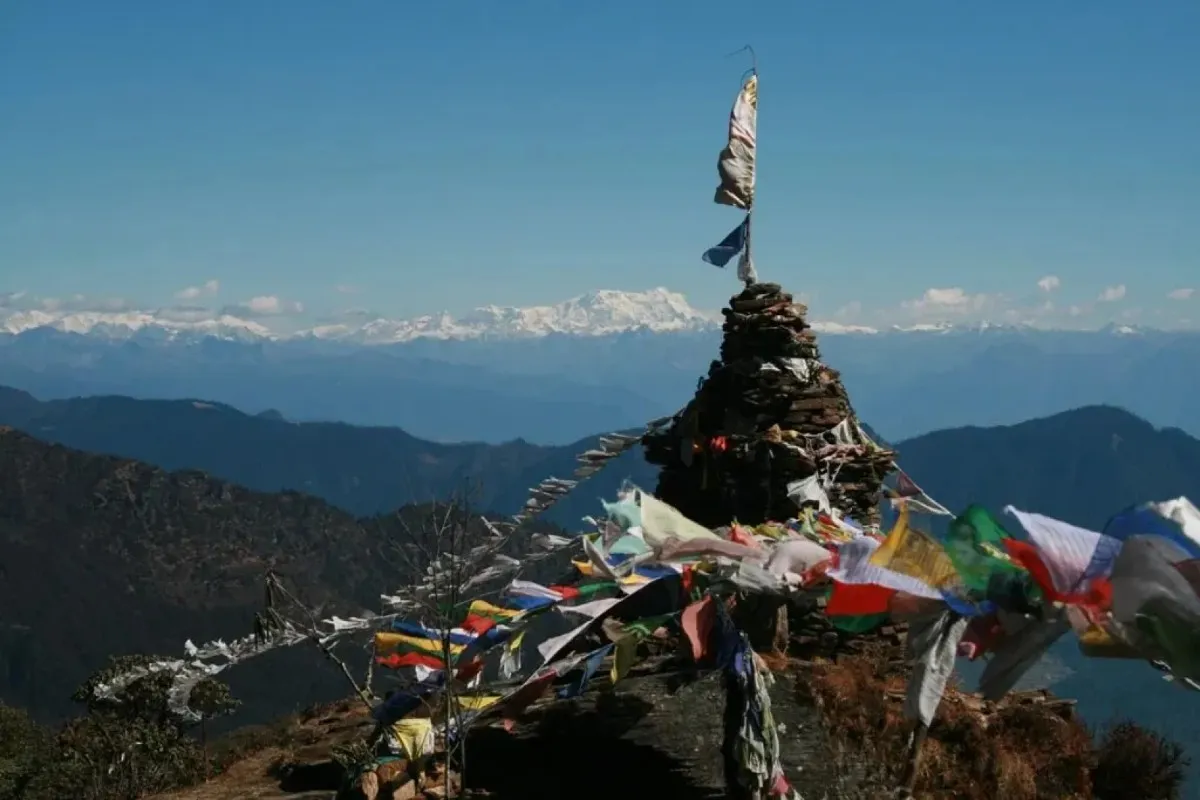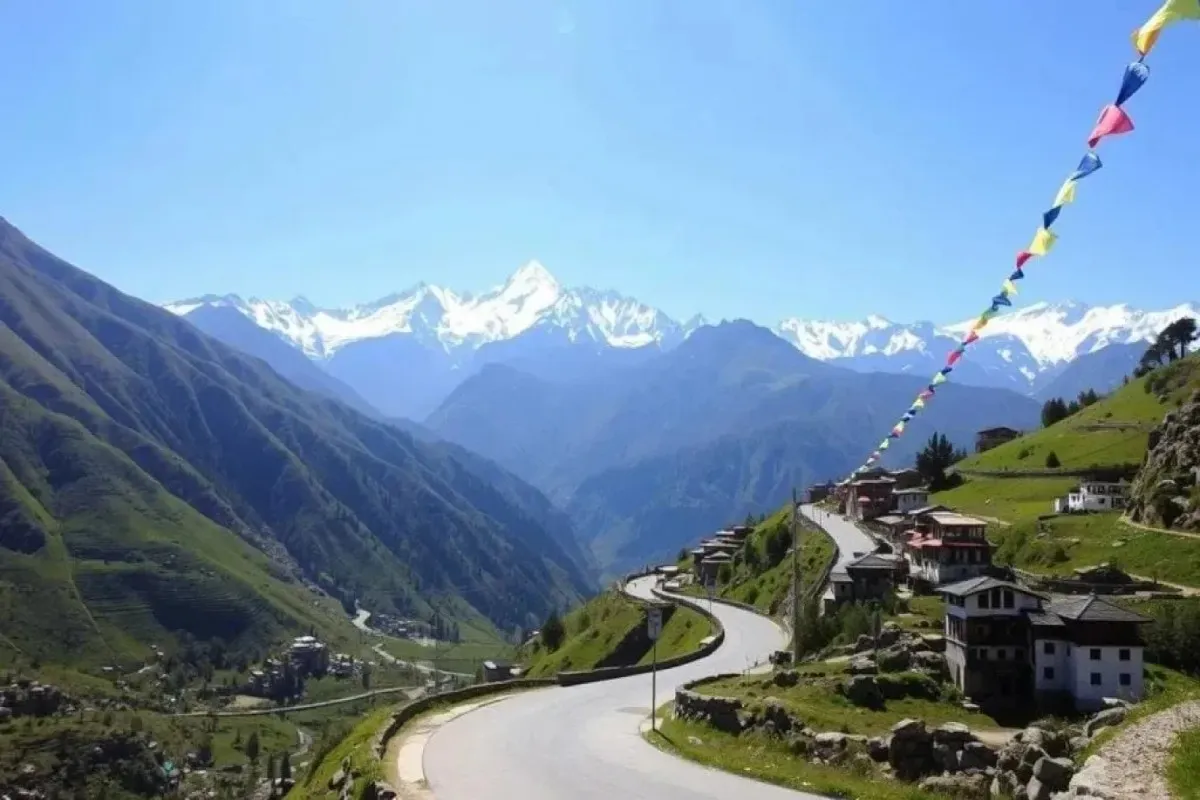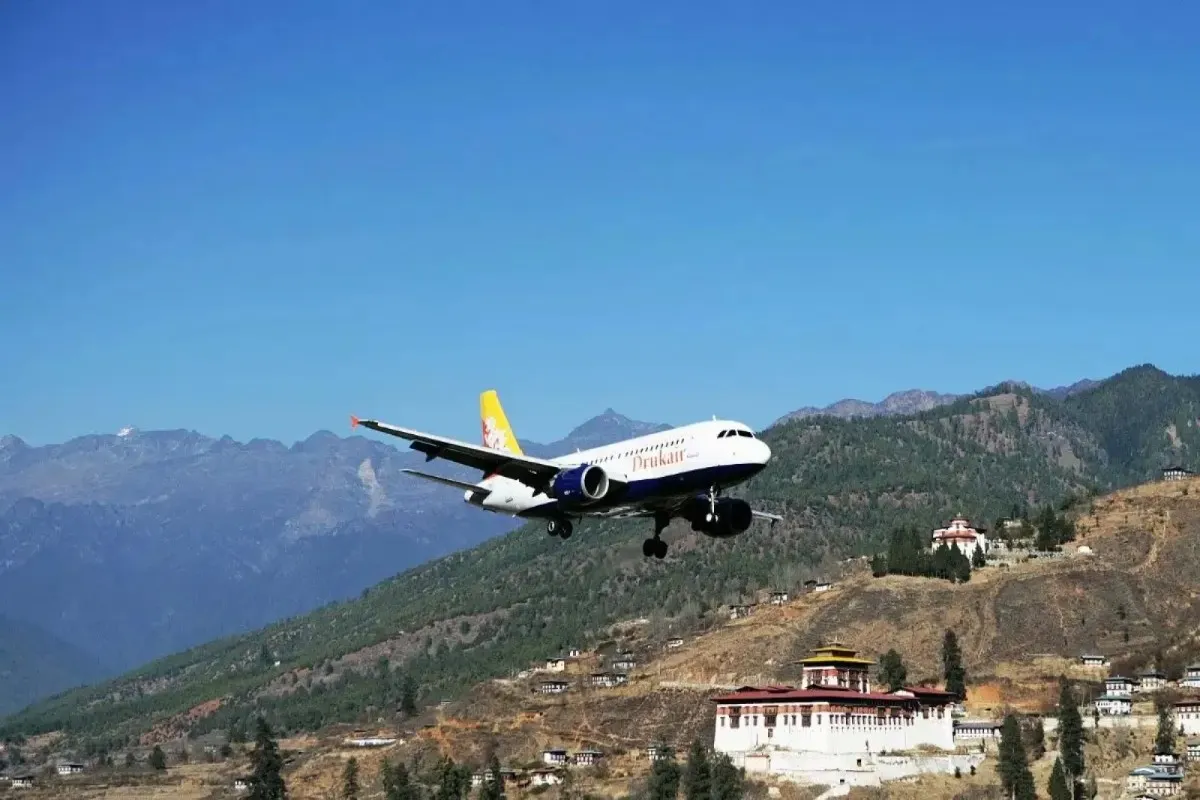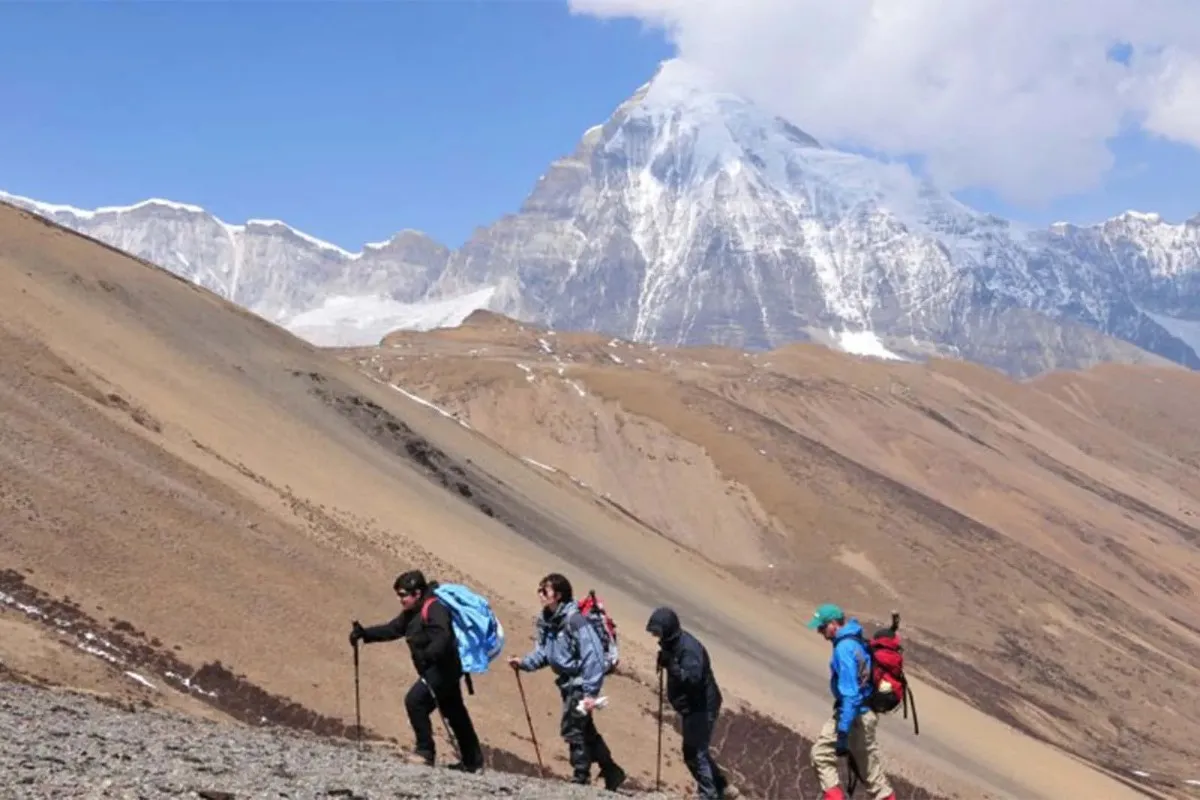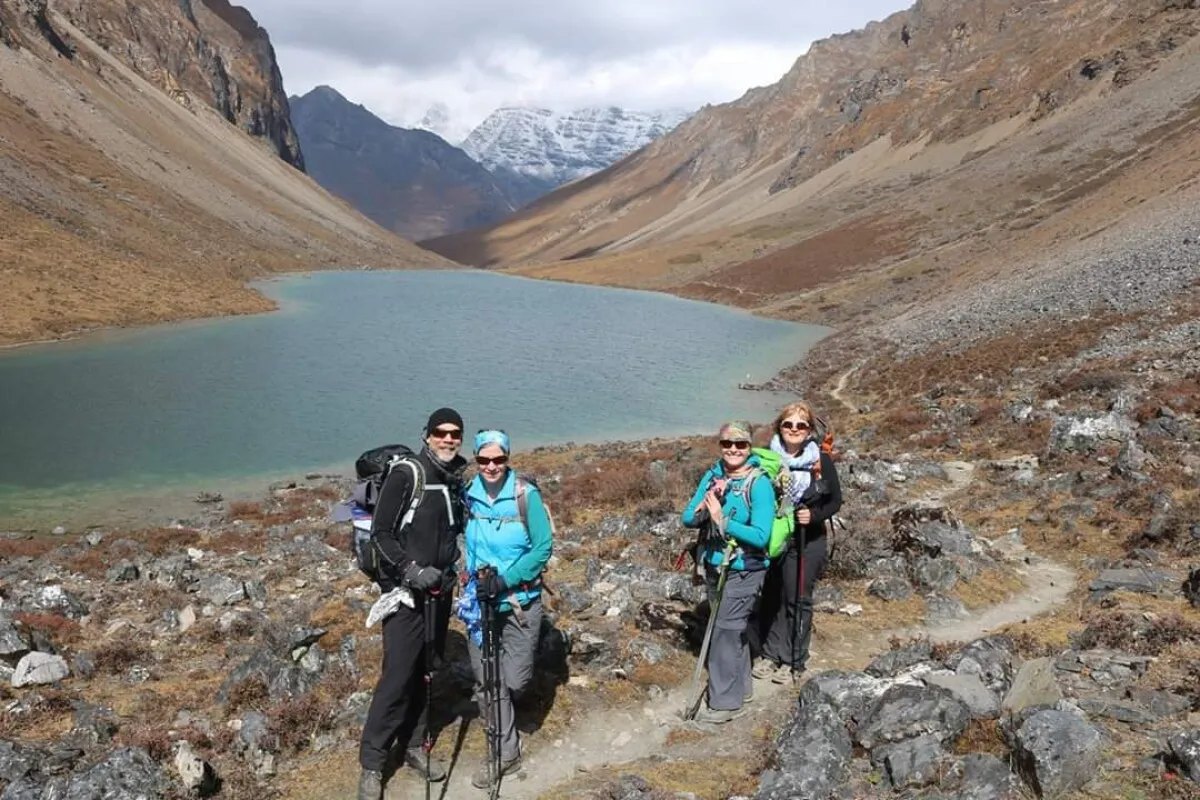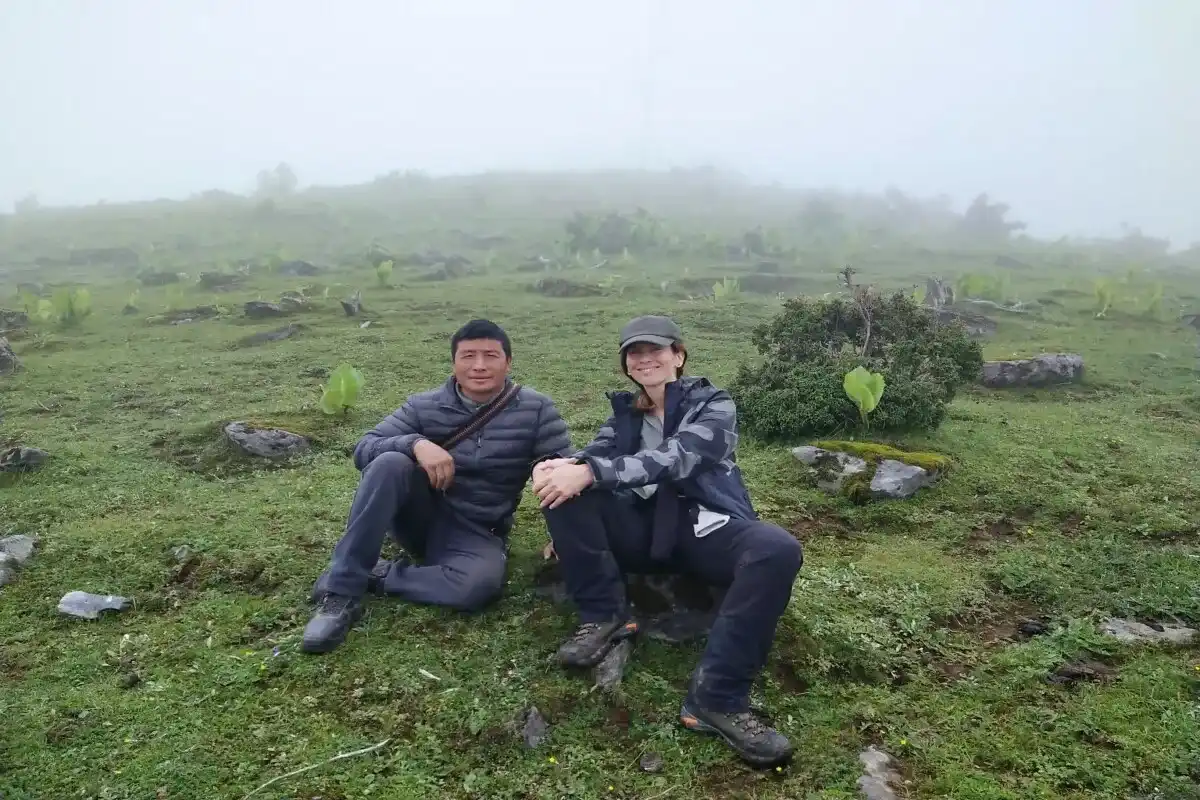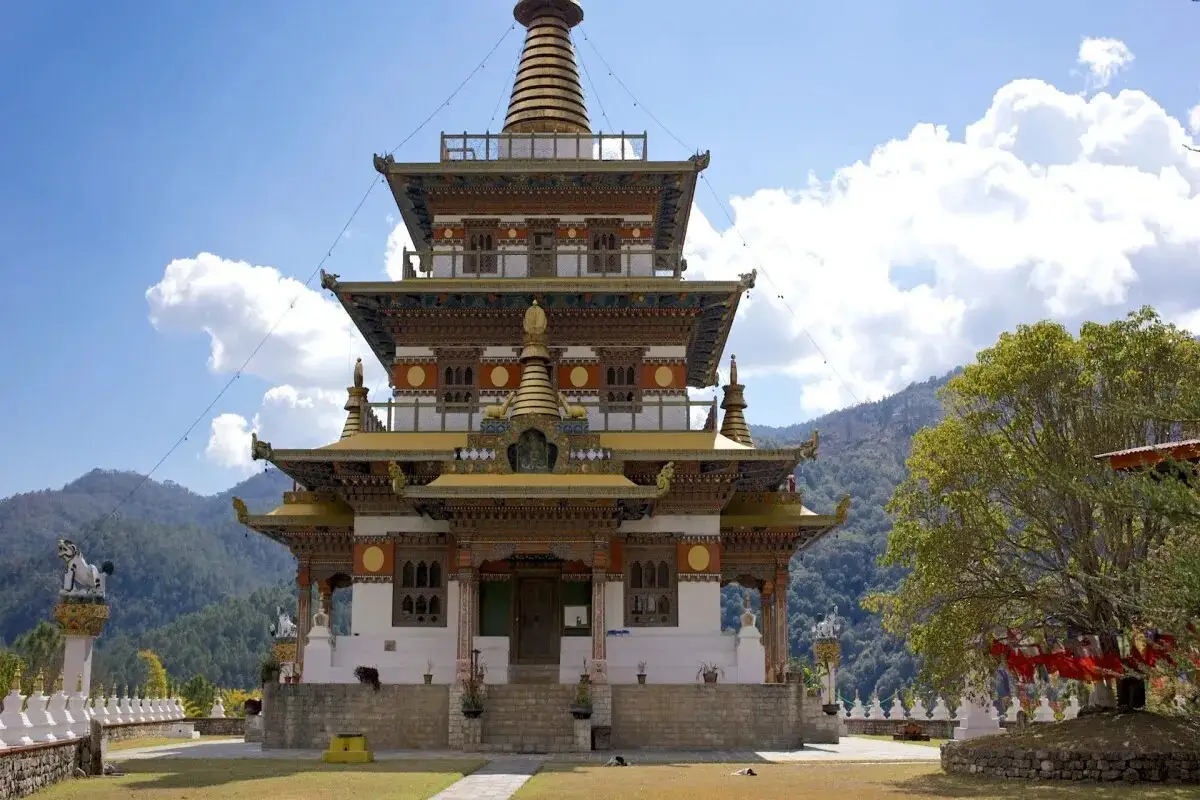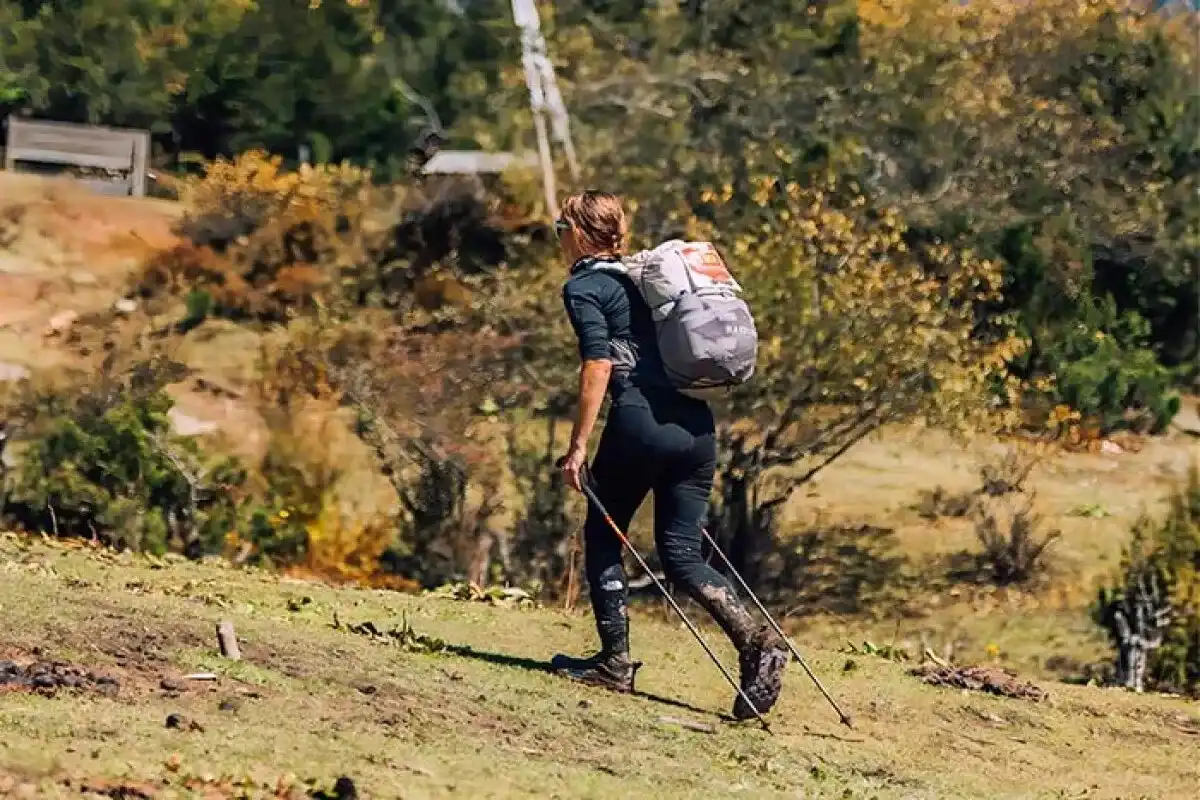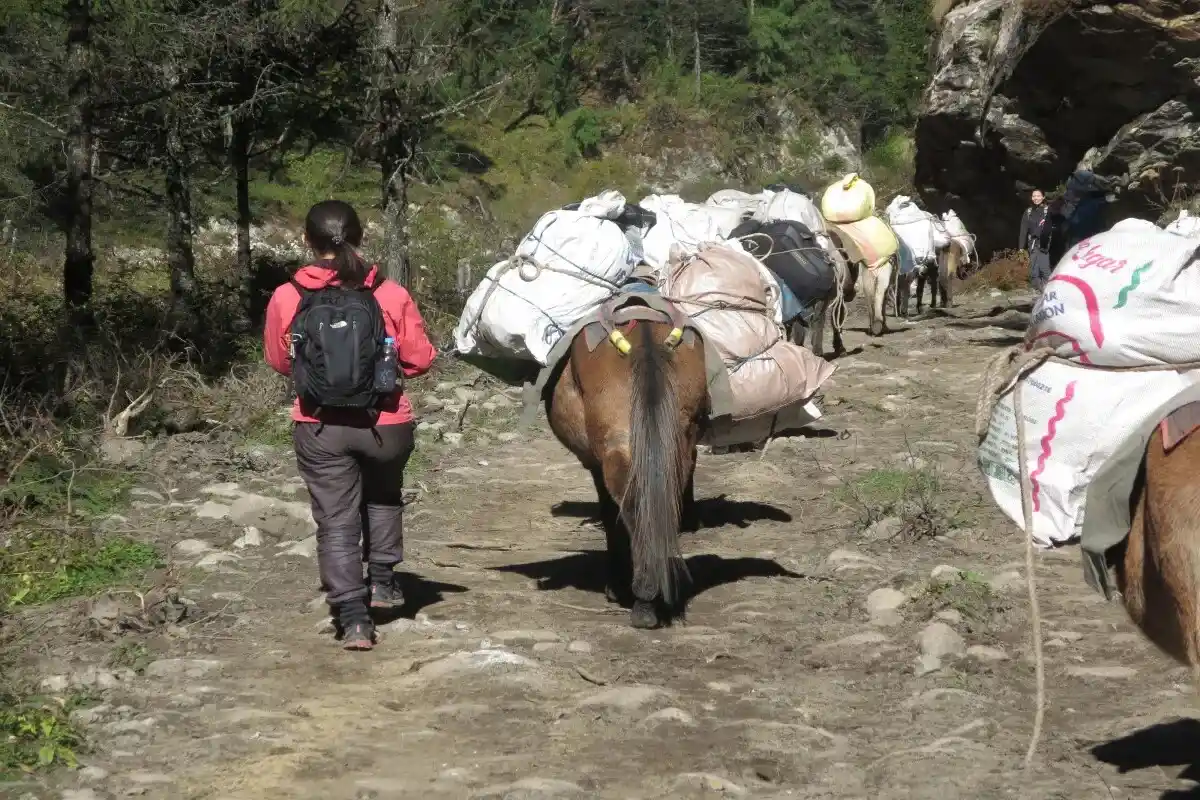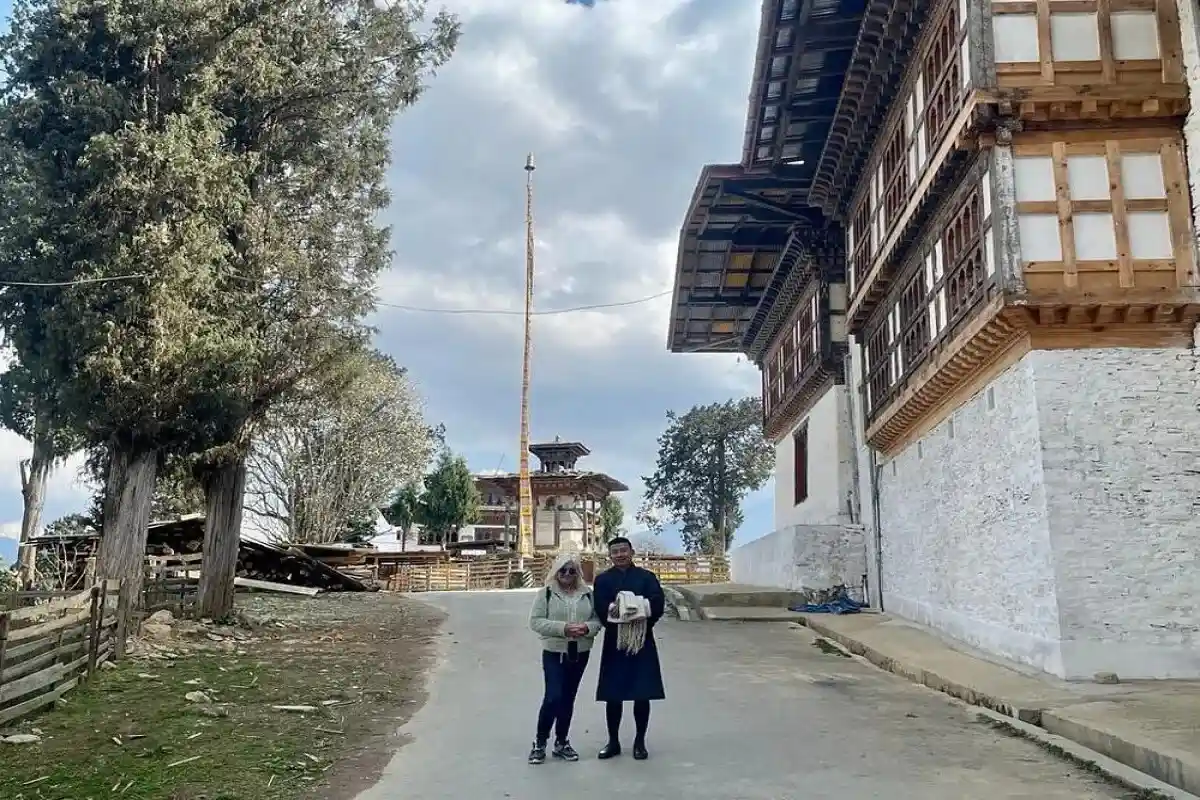Druk Path Trek - 7 Days
If you like a cultural hike, then the Druk Path trek will be the best option. You can do this trek comfortably and speedily within 7 days. It begins from Thimphu and ends in Paro. You will cover the most unexplored regions of Bhutan through this trek. You will enjoy a stroll through different forests, altitudes, and landscapes. It is done in the spring and winter seasons.
Highlights
- Visiting a high-altitude lake, Jimilangtsho
- Enjoying the breathtaking view of Mount Jumolhari
- Hiking from Jele Dzong to Jangchulakha
- Panoramic view of several mountains
Trip Overview
By joining this trek, you can learn about the nature and culture of the country in a few days. Bhutanese individuals are nice, and you can engage with them to learn about their daily lives. Let Orrog guide you on this amazing adventure. We promise you a safe, fun, and memorable tour. Book Druk Path Trek with us and experience the real magic of Bhutan.
Visiting a high-altitude lake, Jimilangtsho
The high-altitude lake Jimilangtsho is located in the Thimphu district. The lake is known for its spectacular views and bird watching. The region has a beautiful view of numerous mountains. It contains big trout. It is an ideal location for repose.
Enjoying the breathtaking view of Mount Jumolhari
Jumolhari is the partner of Kangchenjunga Peak. Mount Jumolhari has a height of 7,326 meters. Tibet and Bhutan converge here. This mountain supplies a large portion of water for the Paro Chu River. This mountain is revered by Tibetan Buddhists. An excellent way to experience the mountainous terrain is to travel to Jumolhari.
Hiking from Jele Dzong to Jangchulakha
You will come across rhododendrons as you hike through an alpine woodland. This region also features yak heads. Various snow-laden summits are seen along the walk. The sound of monastic peasants can also be heard. Jimilang Tsho lake is noticeable upon arrival at Jangchulakha.
Panoramic view of several mountains
A broad scene of the summits and their surroundings can be seen when looking at many mountains in a panoramic view. Numerous viewpoints of the Alpine regions are available during the hike. A panoramic view is noticeable from the elevation. This walk offers a panoramic vista of Mount Jumolhari.
Why come for the Druk Path trek in Bhutan?
Druk Path Trek offers a chance to get dive into nature throughout the route .You can experience the natural habitats and also explore the local villages . There are several reasons to join this trek, some of which are listed below:
To learn the Traditions and Culture of Bhutan:
By joining this hike, you can learn about the past and culture. You will also gain an extensive knowledge of country customs. You will see the lifestyle of local inhabitants and enjoy their cuisine. You will also explore ancient temples and monuments.
To rest in Stunning Nature
If you get frustrated with the daily activities, you can join this trek. On this trek, you will hike through a quiet native surrounding. The mountain air will rejuvenate you. During the night, you will establish camp in several picturesque settings.
To observe remarkable Flora and Fauna
On this trek, you can see various plants and animals. You can also see flowers when you hike through the different landscapes. Rare creatures such as the Takin, red pandas, and many birds can also be observed. Enthusiasts of nature will appreciate each moment of this expedition.
To admire magnificent Mountain Vistas
The hike is quite strenuous. From the height, you can see peaks like Mt. Gangkar Punsum, Mt. Chomolhari, and Jichu Drake. These mountains hold significant importance for the Bhutanese People.
An Adventure for the Spirit
This expedition is beyond simple hiking. It provides an opportunity for thought, repose, and the appreciation of tranquility. This walk will allow you to experience nature, although you will discover something beyond that. The nation offers an exceptional combination of adventure, serenity, and culture. The Druk hike is perfect for anyone desiring to explore a scenic locale and rejuvenate themselves.
Conclusion
Druk Path Trek is not a hike. It's even greater than that. It's a lifetime experience. You'll see Bhutan's landscapes, culture, and mountains. Within a week, you will hike through rhododendron forests, lakes, and mountain ridges. You will also have a chance to taste the hospitality of the nationals. You will never forget colorful flowers, locals' smiles, and stunning trails. You'll also feel proud to have completed this moderate trek. Let Orrog guide you through this incredible trek. Reserve your journey now and immerse yourself in the enchantment of Bhutan.
By joining this trek, you can learn about the nature and culture of the country in a few days. Bhutanese individuals are nice, and you can engage with them to learn about their daily lives. Let Orrog guide you on this amazing adventure. We promise you a safe, fun, and memorable tour. Book Druk Path Trek with us and experience the real magic of Bhutan.
Visiting a high-altitude lake, Jimilangtsho
The high-altitude lake Jimilangtsho is located in the Thimphu district. The lake is known for its spectacular views and bird watching. The region has a beautiful view of numerous mountains. It contains big trout. It is an ideal location for repose.
Enjoying the breathtaking view of Mount Jumolhari
Jumolhari is the partner of Kangchenjunga Peak. Mount Jumolhari has a height of 7,326 meters. Tibet and Bhutan converge here. This mountain supplies a large portion of water for the Paro Chu River. This mountain is revered by Tibetan Buddhists. An excellent way to experience the mountainous terrain is to travel to Jumolhari.
Hiking from Jele Dzong to Jangchulakha
You will come across rhododendrons as you hike through an alpine woodland. This region also features yak heads. Various snow-laden summits are seen along the walk. The sound of monastic peasants can also be heard. Jimilang Tsho lake is noticeable upon arrival at Jangchulakha.
Panoramic view of several mountains
A broad scene of the summits and their surroundings can be seen when looking at many mountains in a panoramic view. Numerous viewpoints of the Alpine regions are available during the hike. A panoramic view is noticeable from the elevation. This walk offers a panoramic vista of Mount Jumolhari.
Why come for the Druk Path trek in Bhutan?
Druk Path Trek offers a chance to get dive into nature throughout the route .You can experience the natural habitats and also explore the local villages . There are several reasons to join this trek, some of which are listed below:
To learn the Traditions and Culture of Bhutan:
By joining this hike, you can learn about the past and culture. You will also gain an extensive knowledge of country customs. You will see the lifestyle of local inhabitants and enjoy their cuisine. You will also explore ancient temples and monuments.
To rest in Stunning Nature
If you get frustrated with the daily activities, you can join this trek. On this trek, you will hike through a quiet native surrounding. The mountain air will rejuvenate you. During the night, you will establish camp in several picturesque settings.
To observe remarkable Flora and Fauna
On this trek, you can see various plants and animals. You can also see flowers when you hike through the different landscapes. Rare creatures such as the Takin, red pandas, and many birds can also be observed. Enthusiasts of nature will appreciate each moment of this expedition.
To admire magnificent Mountain Vistas
The hike is quite strenuous. From the height, you can see peaks like Mt. Gangkar Punsum, Mt. Chomolhari, and Jichu Drake. These mountains hold significant importance for the Bhutanese People.
An Adventure for the Spirit
This expedition is beyond simple hiking. It provides an opportunity for thought, repose, and the appreciation of tranquility. This walk will allow you to experience nature, although you will discover something beyond that. The nation offers an exceptional combination of adventure, serenity, and culture. The Druk hike is perfect for anyone desiring to explore a scenic locale and rejuvenate themselves.
Conclusion
Druk Path Trek is not a hike. It's even greater than that. It's a lifetime experience. You'll see Bhutan's landscapes, culture, and mountains. Within a week, you will hike through rhododendron forests, lakes, and mountain ridges. You will also have a chance to taste the hospitality of the nationals. You will never forget colorful flowers, locals' smiles, and stunning trails. You'll also feel proud to have completed this moderate trek. Let Orrog guide you through this incredible trek. Reserve your journey now and immerse yourself in the enchantment of Bhutan.
Short Itinerary
Arrive in Paro, Drive to the hotel, and explore Paro markets.
Drive to Damchena, & trek to Jele Dzong.
Trek to Jangchulakha via an alpine forest.
Hike to Jimilangtsho Lake, & camp overnight.
Trek to Simkotra Tsho via Janetsho Lake.
Trek to Thimphu via Phajoding, drive to hotel.
Drive to Paro, departure from Bhutan.
Price Includes
- Pick-up and drop-off services
We provide a pick-up service from the airport to the hotel on your arrival day and from the hotel to the airport on the departure day.
- Lunch, Breakfast, and Dinner
All meals during the trek will be provided by the company. However, personal food items like coffee, tea, cold drinks, etc, are not included in the package.
- A guide proficient in English
A certified, English-speaking guide will accompany you throughout the trip. The guide will offer information about the trail, culture, nature, and history, and ensure your safety and a smooth experience.
- Comfortable SUV vehicle
A private SUV will be used for road travel before or after the trek. These vehicles are ideal for Bhutan’s hilly terrain and provide a comfortable ride.
- All types of entry costs
This covers all permit fees, monument entrance fees, park fees, and any other official charges required for trekking or sightseeing activities during the tour.
- Professional Drive
We ensure a safe and smooth drive during your tour. We have licensed and experienced drivers for that.
- Sleeping bag and tent
Quality sleeping bags and tents are provided for your comfort and warmth during the camping nights on the trek. So, you don’t have to worry about buying a new one.
- Farewell dinner
A special farewell meal, typically arranged in a traditional restaurant, is offered at the end of the tour to celebrate the journey and thank the participants.
- Evening Tea/coffee with snacks
Each evening, you’ll be served tea or coffee along with light snacks like biscuits and popcorn.
- Drinking Water
Safe and clean drinking water is provided throughout the trek.
- Pick-up and drop-off services
We provide a pick-up service from the airport to the hotel on your arrival day and from the hotel to the airport on the departure day.
- Lunch, Breakfast, and Dinner
All meals during the trek will be provided by the company. However, personal food items like coffee, tea, cold drinks, etc, are not included in the package.
- A guide proficient in English
A certified, English-speaking guide will accompany you throughout the trip. The guide will offer information about the trail, culture, nature, and history, and ensure your safety and a smooth experience.
- Comfortable SUV vehicle
A private SUV will be used for road travel before or after the trek. These vehicles are ideal for Bhutan’s hilly terrain and provide a comfortable ride.
- All types of entry costs
This covers all permit fees, monument entrance fees, park fees, and any other official charges required for trekking or sightseeing activities during the tour.
- Professional Drive
We ensure a safe and smooth drive during your tour. We have licensed and experienced drivers for that.
- Sleeping bag and tent
Quality sleeping bags and tents are provided for your comfort and warmth during the camping nights on the trek. So, you don’t have to worry about buying a new one.
- Farewell dinner
A special farewell meal, typically arranged in a traditional restaurant, is offered at the end of the tour to celebrate the journey and thank the participants.
- Evening Tea/coffee with snacks
Each evening, you’ll be served tea or coffee along with light snacks like biscuits and popcorn.
- Drinking Water
Safe and clean drinking water is provided throughout the trek.
Price Excludes
- International Airfare
- Visa Charges and Insurance
- Individual expenditures
- Additional-day lodging
- Laundry and telephone expenses
- Tips for the guide and the porter
- International Airfare
- Visa Charges and Insurance
- Individual expenditures
- Additional-day lodging
- Laundry and telephone expenses
- Tips for the guide and the porter
Druk Path Trek Itinerary
As soon as you land at Paro, your tour will begin. There will be a representative to pick you up when you reach Paro International Airport. A representative will take you to the tourist van shortly after check-in is finished. You will then continue to your hotel. After a short break, you can discuss the itinerary with your guide.
You can take an evening stroll around Paro town if you're feeling energetic. You can buy the trekking equipment at the market if you need. You'll head back to your accommodation after exploring the town. You can either unwind or prepare your gears for the hike. You will spend your first night at Paro.
On this day, you will wake up early, eat breakfast, and take a tourist vehicle to Damchena village. You will travel through apple orchards and tranquil pine forests. You will meet your guide when you arrive in Damchena. From this village, your hike begins.
First, you will ascend the hill gradually and travel through forests and green fields. As you gain elevation, you will be able to see the view of Paro Valley and Mount Jumolhari and many other snowy peaks from halfway down the trail. After a few hours of climbing, you will descend to reach the fort.
After a long hike, you will arrive at the campsite. When you get there, you can experience beautiful scenery and breathe fresh mountain air. You will be staying in Jele Dzong tonight.
In Jele Dzong, you will have hot tea before starting your trek. Today, you have to climb uphill for several hours. Then, the path becomes easier to walk. You will walk along a mountain ridge. As you walk, you'll come beyond a forest. The forest is home to tall alpine trees and colorful rhododendron flowers. Numerous animals and birds are also visible.
After several hours of walking, you will be at Jele La Pass. The Yak house can be seen after crossing the pass. Beautiful views of different high peaks will be visible along the route. Along the path, monal pheasant sounds can be heard.
After a lengthy, calm trip, you will arrive at Jangchulakha. Once you reach Jangchulakha, the view will amaze you. You will stay at the Jangchulakha.
The hike today will be peaceful and breathtaking. The trail will take you along a high ridge with breathtaking scenery of mountains and canyons. You have to ascend and descend the entire trail. You'll pass through landscapes and forests. You can see many trees and animals in the forest.
After a long climb, you will reach Jimilangtsho in the afternoon. Thereafter, you'll head for the campsite. The stunning Lake will be visible once you get near the camp. After a strenuous walk, this location is ideal for resting. You can see different fish in the lake. You will also see several famous peaks.
You might sit here to watch the sunset in the evening. The peaceful atmosphere and breathtaking view of the sunset make it the best way to end the day. You will spend the night at the camp beside the Jimilangtsho Lake.
Today, you will begin your walk from Jimilangtsho Lake. The hike will start with a climb. As you continue, you will cross the ridge. After that, you will descend for a certain time. After a short hike, you will reach a shelter. You can enjoy your snacks and take a short rest here.
From here, you must ascend until you reach a high point. You will walk through forests along the way. The flowers are blooming, and the colors are stunning if you hike in the spring. You'll reach Janetsho Lake after hiking for several hours. As you move forward from the lake, you can see yaks grazing.
After a lengthy hike, you will reach your camp. You can see a broad, serene vista from here. You will stay at the camp tonight.
This will be your final day of hiking. You will set out on your walk following a hearty and delicious breakfast. Your walk will start with a gradual ascent. You can see breathtaking views of Mt. Gangkar Puensum as you walk. You will descend after climbing for a few hours. You will descend until you reach Phajoding. Once you reach Phajoding, you'll be able to see the town of Thimphu in the distance. You will stroll through a serene pine forest from Phajodhing. You will reach a road above the Takin Sanctuary after walking through the forest. Your walk will come to an end here.
A car will be waiting for you in this place. It will take you to the hotel in Thimphu. During the trip, you may see the everyday activities of residents. You can relax and have a hot shower when you reach the hotel.
In the evening, you are free to explore alone. You can explore the city on foot, go around shops in the area, and choose some souvenirs to put in your home. After that, we will plan a special dinner for you. This will be the perfect time to celebrate the end of your journey.
You will leave Bhutan today. Upon awakening, you will partake in your final meal in Bhutan. Then, you will travel to Paro. We shall bid farewell when your tenure with Orrog concludes. It's time to head home after finishing the stunning Druk Path Trek. Remember the wonderful times as you board your flight. Do not forget the quiet, calm trails, the smiling, friendly faces, and the stunning views of the Land of the Thunder Dragon. Bhutan will have a special place in your mind.
Know Before You Travel
-
You should not be an expert to join this trek,:
But you should be physically and mentally fit. On average, you should walk 7-8 hours daily. Before 2 months of a trek, train your body by running and climbing to gain stamina. However, mental stamina is the essential factor of success. Several trekkers have completed this trek, and all of them were not fit. They maintain passion and resolve, irrespective of difficulty. Despite potential weather fluctuations and harsh terrain, with the appropriate mindset and preparation, nearly everyone can appreciate and successfully do this remarkable expedition in the Himalayas.
Druk Path Trek
Download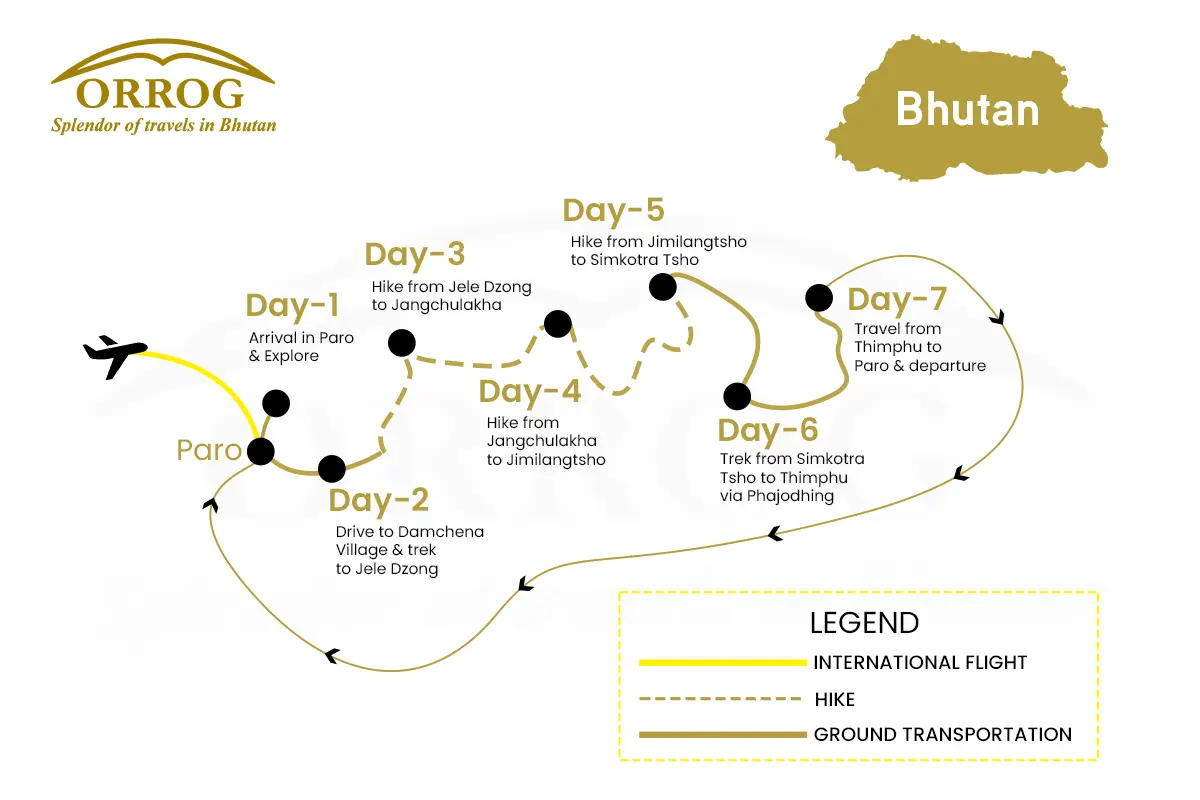
Druk Path Trek
FAQs for Druk Path Trek
Orrog is one of the best trekking companies in Bhutan. We are a certified travel company and have many years of experience.
You can reserve your seat by contacting us. If you deposit some amount of money, we will also confirm and start to plan accordingly. You can also book by filling out the online form on our site.
Yes, the package includes guides. All the guides we provide are licensed.
Yes, it is possible to meditate at a monastery during the Druk Path Trek. Monks will teach you to meditate. You can also learn from other meditators.
Yes, we will pick you up and drop you off at the given location. Our representative will come to pick you up, and they will also welcome you.
Yes, you can cancel the trek, but you have to go through the cancellation policy. You can also reach out to us directly for help.
We will customize your itinerary based on your schedule, budget, and fitness level. We can combine some of the renowned places with your itinerary.
Yes, Bhutan is one of the safest nations. You can trek alone, and on the trek, you will find different signboards showing the paths. Bhutanese people respect tourists and are very helpful.
No, you cannot fish in the lakes along the Druk Path Trek. You can feed the fish and take pictures of it. If someone sees you fishing, you will be fined.
Yes, you can book a private room during the trek. But you have to pay some extra charges. We will arrange the room according to your requirements.
Bhutan typically uses Type C, Type D, and Type G electrical outlets. Standard safe voltage is 230V and frequency is 50Hz; therefore, ensure that your equipment is compatible with this voltage
Indeed, it is highly advised to take along a universal travel adapter, particularly one to fit a variety of types of plugs, because plugs can be different in a hotel or a guesthouse.
Charging opportunities are limited, mostly available at the beginning and end of the trek.
Power supply in towns like Paro and Thimphu is generally stable, but occasional power cuts do happen, especially during storms or in rural areas. It's wise to charge your devices whenever electricity is available.
: It's not recommended during the trek due to limited power availability.
You need a visa and all necessary permits for your trip. These documents can not be received on the day of your arrival, so they must be processed before coming here. After you book a trip with us, we will manage these papers for you. Your Bhutan visa is arranged by Orrog as part of the package.
The main way to come to Bhutan is through Paro International Airport, which is well-connected to cities like Bangkok, Delhi, Kathmandu, and Singapore. Most people arrive by air, but if you plan to come via road, you can enter through Phuentsholing, located on the southern border with India, which is the most commonly used entry point.
It is recommended to apply for the visa at least 20 days before your planned departure date so that there is enough time for processing your Bhutan visa, finalizing your itinerary, and arranging your guides and transportation. Although visa processing itself is relatively fast once payment is received, early preparation helps avoid delays and ensures availability, especially during peak seasons (spring and autumn).
You don’t require a passport-size photo for the visa, but it is wise to carry at least 2–4 recent passport-sized photographs during your trip. These may be needed for local permits, registration, or when applying for a local SIM card upon arrival in Bhutan.
Yes, you can lengthen your stay in Bhutan either before or after your trip. Bhutan’s tourism model requires visitors to pay a Sustainable Development Fee (SDF) and a daily package cost, so any extra days will involve additional charges. Extensions are a great opportunity to explore cultural sites in Paro, Thimphu, or even add another short trip or day hike.
Yes, Bhutan requires full tour payment in advance before your visa can be processed and issued. The government of Bhutan regulates this policy to ensure that all travel arrangements are confirmed through a licensed Bhutanese tour operator. We are a licensed tour operator that ensures you have everything you need for a trouble-free trip.
Orrog offers packages with the customer in mind that guarantee a hassle-free travel experience.
Any personal expenses are not covered in the package like:
- Tips for your guide and other staff
- Bottled drinks and snacks(personal expense)
- Souvenirs or local crafts
Credit cards are easily accepted in major cities like Paro and Thimphu. But in remote areas, you may not have access to a card or an ATM. So, it is best to carry some cash before heading for the trip.
Tipping is not mandatory, but it is a widely appreciated gesture and a customary way to show gratitude for good service. The tipping guideline would be to give USD 5-10 per day as a tip for the guides and other staff.
Paro International Airport is the only international airport in Bhutan. It is well connected by flights from cities like Bangkok, Delhi, Kathmandu, and Singapore.
Yes, airport pick-up and drop-off are included in the package. We will have your guide and driver meet you at the airport and transport you to your hotel.
While Bhutan's roads are mostly paved, some parts are narrow, winding, and occasionally affected by weather. However, we ensure your travel is safe, well-maintained, and driven by an experienced professional throughout the journey.
The Trek begins from Sharna Zampa, which is a short drive from Paro town. Once you arrive in Paro, we will arrange private ground transportation to the starting point. The scenic drive passes through lush valleys and traditional villages.
The Bhutanese Ngultrum is used in Bhutan. All local transactions during the trip will be in BTN.
U.S. dollars (USD) are generally accepted at larger hotels, souvenir shops, and tour operators, particularly in Paro and Thimphu. However, it’s advisable to convert your currency to BTN for general purchases in rural areas. Other currencies like the Euro or the Pound are not commonly accepted directly.
No, credit or debit cards are not accepted on the trip, as it takes you through remote regions with no banking or electronic payment access. All trip-related payments like accommodation, meals, permits, etc, are paid in advance.
You can exchange foreign currency at the Paro International Airport, at banks, or through licensed money changers in cities like Thimphu and Paro. It's best to exchange enough cash before heading out on the trip.
The national language is Dzongkha, but many Bhutanese also speak English. If you speak English and are worried about communicating with the local people, you will have your guide as a translator.
Yes, all licensed tour guides in Bhutan are required to speak fluent English. Many are also trained in other languages such as German, Japanese, or French. Communication during the trip will be smooth and clear in English.
Most signboards, tourist maps, and information brochures are written in English, especially in tourist destinations like Paro, Thimphu, and trailheads. Directional signs along routes are often labeled in both Dzongkha and English.
No, learning Dzongkha is not at all needed for the trip, but knowing a few basic words like "Kuzu zangpo la" (Hello) or "Kadrinche la" (Thank you) is a good way to interact with the locals.
Language barriers are minimal, as your guide will handle all communication with locals and support staff. Your guide will translate for you during your interaction with the locals.
To greet people, you can greet with locals “Kuzu zangpo la” (Hello) by performing a slight bow. Most common greetings include physical greetings, such as shaking hands less visible, especially in rural areas.
Yes, but remember to seek permission, especially when taking photos of monks, locals, or temples. Please note that clicking photos is not allowed at most religious sites.
Visitors should dress modestly and respectfully. This means:
- Covering shoulders and knees
- Removing hats and sunglasses
- Not wearing shorts or sleeveless tops
This applies to both men and women.
Yes, Bhutanese society is deeply rooted in Buddhism and tradition. Here are some key taboos:
- Do not point your feet at people or sacred objects
- Never touch anyone on the head, as it is considered sacred
- Walk clockwise around temples, stupas, and religious monuments
- Avoid public displays of affection
While gifts are not expected, they may be accepted graciously if given with respect. It is advisable to consult with the guide before giving out anything.
Bhutan follows Bhutan Time (BTT), which is UTC/GMT +6 hours. This time zone remains consistent throughout the year.
No, Bhutan does not observe daylight saving time. The country maintains the same time year-round.
Bhutan is 30 minutes ahead of India. For example, 12:00 PM in India is 12:30 PM in Bhutan.
Yes, souvenirs can be bought in Paro or Thimphu before or after the trip.
Some popular souvenirs include hand-woven textiles (kira and gho fabric), prayer flags, thangka (religious scroll) paintings, handmade paper products, traditional masks, and Buddhist artifacts.
You can do some gentle bargaining in local street markets. However, in government-run shops and fixed-price stores, prices are usually non-negotiable.
Yes, you can easily purchase a SIM card upon arrival in Bhutan. We will assist you with the process, and you'll need a passport copy and a passport-sized photo.
No, internet access is not available during the trip. However, Wi-Fi is available in hotels in Paro and Thimphu before and after the trip.
Yes, snow is quite likely, especially at higher elevations, which are above 4,800 meters. If you trek during late autumn (October–November) or early spring (March–April), you may encounter snowfall. During the peak of spring (April–May) and autumn (September–early October), trails are usually clear, although sudden weather changes in the mountains can still bring unexpected snow showers. You should always be prepared for cold conditions and potential snowfall, regardless of the season.
No, Treks are not accessible throughout the year. The trail is generally closed during the winter(December- February) due to heavy snowfall that makes high mountain passes impassable and increases the risk of avalanches and extreme cold.
Since the weather can be unpredictable and temperatures can vary drastically, layered clothing is essential. You should pack:
- Base layers (thermal tops and bottoms)
- Insulating layers like fleece or down jackets
- Waterproof and windproof outer layers
- Warm hats, gloves, and neck gaiters for freezing conditions
- Moisture-wicking socks and weatherproof trekking boots
The weather is clear with mild daytime temperatures during spring and autumn. But you will be travelling in high altitudes, so it is necessary to carry enough clothing because you will encounter lower temperatures. The nights are freezing cold at high altitudes. So, pack accordingly.
The Jomolhari Trek is classified as moderate to strenuous, basically due to its location, the long trail, and several days of camping. The track, although not tough, is more suited to people who have earlier hiking or trekking experience. Beginners with good fitness and determination can still complete the trek, but we recommend undertaking some pre-trip training, such as having a long walk or doing some cardio exercises.
This trip is mainly for people aged between 12 and 65. But if you are physically fit and have the willpower to complete this trek, you can complete this trek because we will be there to help you in case of any problem.
A Medical certificate is not mandatory, but a health check-up is advised. Since the trek reaches altitudes over 4,800 meters (15,750 feet), you can have a normal checkup before the trek to make sure that you have no ongoing issues.
Yes, your children can join the trek if they are in good physical condition, which requires walking for a few hours every day. They should have parental guidance during the trek.
Yes, senior citizens can participate, given that they are fit to complete this trek. A visit to the Doctor is strongly advised, and seniors should engage in pre-trek training to improve stamina and cardiovascular health.
During this Trek, you will stay in tented camps at remote, scenic campsites along the trail. These camps are fully supported and managed by us. Before and after the trek, you will stay in comfortable hotels or guesthouses in Paro and Thimphu. All accommodations are arranged by us as part of your package.
Yes, all campsites are carefully chosen, keeping safety, cleanliness, and hygiene in mind. Orrog follows strict sanitation practices, including setting up toilet tents, safe waste disposal, and clean food preparation areas. You’ll also be accompanied by well-trained staff to ensure your safety during the trip.
Yes, we provide a high-quality sleeping bag in the package, which is suitable for sub-zero temperatures of the high-altitude regions. However, you can bring your sleeping bag if you prefer additional comfort or hygiene.
Yes, hot water for drinking is available at camps, but not hot water for showers. You can carry biodegradable wet wipes for convenience.
Each campsite is equipped with portable toilet tents or simple pit latrines, maintained by the support team to ensure cleanliness and privacy. While they are basic, they are safe, hygienic, and environmentally conscious. It is advisable to carry your toilet paper, hand sanitizer, and eco-friendly toiletries to maintain hygiene during the trek.
If you experience symptoms such as headache, nausea, dizziness, or fatigue, your guide will have you rest, hydrate, and monitor your condition closely. If symptoms worsen, you will be taken to a lower altitude immediately, which is the most effective treatment. All treks are designed with gradual altitude gain and acclimatization days to minimize the risk.
Yes, emergency helicopter evacuation is available in Bhutan and can be arranged in serious cases such as severe altitude sickness or injury. However, helicopter rescue is costly and not included in standard trek packages, so having travel insurance that covers emergency evacuation is mandatory. Guides and tour operators are trained to handle emergencies efficiently and will contact authorities for evacuation if needed.
This trek is moderate to tough with 6–8 hours of walking per day across rugged terrain and steep trails. The altitude, length, and remote conditions require good physical fitness and preparation.
Yes, emergency helicopter evacuation is available in Bhutan and can be arranged in serious cases such as severe altitude sickness or injury. However, helicopter rescue is costly and not included in standard trek packages, so having travel insurance that covers emergency evacuation is mandatory. Guides and tour operators are trained to handle emergencies efficiently and will contact authorities for evacuation if needed.
Yes, travel insurance is mandatory for all international travelers visiting Bhutan, especially for those trekking at high altitudes. Your insurance must cover:
- Emergency medical treatment
- High-altitude trekking (above 4,000 meters)
- Helicopter evacuation and return to the home country
- Trip cancellation or delay
Proof of insurance may be requested before your visa is processed. Make sure to read your policy details carefully or consult with your insurance provider before travel.
Yes, travel insurance is mandatory for this trek. Your policy must include coverage for high-altitude trekking (above 4,000 meters), medical emergencies, and helicopter evacuation, as these services can be very costly in remote Bhutanese terrain. Proof of insurance may be required by your tour operator before confirming the trek.
Mobile network coverage is extremely limited along the Trek. While you may get occasional signal in some lower-altitude areas or villages, most of the trail is out of range, especially near the high passes and campsites. It’s best to inform family and friends that you may be offline for several days.
Charging facilities are not available on the trail since the trek passes through remote and non-electrified areas. It is strongly recommended to bring a high-capacity power bank or a solar charger to power essential devices like phones or cameras during the journey.
Yes, you should bring personal gear such as trekking boots, warm and waterproof clothing, gloves, hats, and a sleeping bag. The other necessary items will be managed by us.
Meals are prepared fresh daily by the trek support team and typically include Bhutanese and Tibetan-style dishes like rice, curries, noodles, soups, vegetables, and occasional meat. Tea, coffee, and snacks are also provided. If you have diet restrictions (vegetarian, vegan, gluten-free, etc.), inform your tour operator in advance so arrangements can be made.
Trekking in Bhutan follows strict environmental protocols, including the “Leave No Trace” principle. All trash is collected and carried out by the support team. Trekkers are expected to avoid littering and carry personal non-biodegradable waste, such as snack wrappers or batteries, back to base.
Yes, safe drinking water is provided each day. You are also encouraged to bring a refillable water bottle and, optionally, water purification tablets or a filtration bottle for additional safety and convenience.
Reviews & Ratings
-
Guarantee -
Thimphu,Bhutan -
975+17160228
Ready to Explore Bhutan?
Start your journey today and discover the magic of Bhutan with our expert guides and carefully crafted tours.
Book This Trip
-
No booking or credit card fees -
Best price guarantee -
Full customize trip
Ask a Question
Feel free to ask us anything about this tour. A travel expert will then get back to you as soon as possible
Ready to Explore Bhutan?
Start your journey today and discover the magic of Bhutan with our expert guides and carefully crafted tours.
